
WELCOME TO SAGA

Introducing Saga
Saga Prefecture, located in the southern Japanese region of Kyushu, can be easily visited from major cities by train or Shinkansen. There are many tourist attractions for everyone to enjoy, including those who want to enjoy history, culture, and nature. It has abundant nature, including Ramsar Convention wetlands (Higashi Yoka Tidal Flat and Hizen Kashima Tidal Flat) and Genkai National Park (Niji-no-Matsubara). In autumn, many tourists visit Karatsu Kunchi, which is registered as a UNESCO Intangible Cultural Heritage site, and one of Asia's largest hot air balloon competitions. Saga has long been famous for its ceramics such as Imari-yaki, Arita-yaki, and Karatsu-yaki. Visitors can also heal from travel fatigue at Ureshino Hot Spring, one of the three best hot springs for beautiful skin in Japan, and other famous hot springs such as Takeo Hot Spring and Furuyu Hot Spring.

Travel brochures

One and Only SAGA

Arita Town Tourist Guidebook

Arita Stroll Map

【Vietnamese】Sách hướng dẫn du lịch tỉnh Saga
Saga prefecture recommendations.

Uranosaki Station Cherry Blossom Trees
The cherry blossom (sakura) trees at Matsuura Railway's Uranosaki Station were planted about 90 years ago, at the same time as Uranosaki Station opened. Nowadays, the station is called the "Sakura Station," since you can admire a spectacular row of cherry blossom trees. An event called the "Sakura Station Festival" is held when the cherry trees bloom. (from 10:00 am to 16:00 pm)

Mifuneyama Rakuen
In spring, 2,000 cherry trees and 50,000 azaleas create a spectacular landscape. In summer, visitors can enjoy digital art projects such as the projection mapping on the water surface of the pond at Mifuneyama Rakuen park. In autumn, you can admire the superb view of the 170-year-old maple tree and the azalea valley.

Hamanoura Terraced Rice Fields ~ Connecting Lights ~
- karatsu-shi
The ensemble of the sea and the rice terraces has been recognized as one of Japan's top 100 rice terraces because of its beauty. Its charm varies depending on the season and the period of time, but the reflection of the sunset during the spring rice planting season is definitely a stuning sight. From November to February, after sunset, magical illuminations decorate the outlines of the rice terraces.

Okawachiyama, the village of secret kilns
The town of ceramics, once particularly appreciated by the feudal lords. A place full of secret kilns with a pictoresque landscape and an outstanding pottery culture. Around 1660 (Edo period), the kilns were used by the Nabeshima clan of the Saga Domain to create the highest quality "Nabeshima" ceramics, which were kept out of the public eye and treasured privately. Even today, 30 potteries are still preserving the traditional production methods and passing them on to the next generation.

Ariake Sea Tidal Wetlands
- Kashima-shi
In 2015, Higashiyoka Higata and Hizen Kashima Higata in the Ariake Sea have been recognized as Ramsar sites under the Ramsar Convention. The Ariake Sea has the highest tidal range in Japan (6 meters), and is home to a variety of animals, such as mudskippers. It is a migratory stopover and wintering spot for water birds, including different endangered species, and is an ideal location for birdwatching.

Takeo Light Exhibition
"Takeo Light Exhibition", immerse yourself in a Takeo decorated with artistic illuminations The "Takeo Light Exhibition" lights up some tourist attractions in the city at night. The nationally registered monument Mifuneyama Rakuen, the Takeo Onsen Gate, Takeo Shrine, and the Takeo City Library will be the venues for the light up.

Niji no Matsubara
Niji no Matsubara (Rainbow Pine Grove), , which stretches along the coast of Karatsu Bay, is a national special scenic beauty spot and one of the three most beautiful pine groves in Japan. Approximately 4.5 km long and 0.5 km wide, about 1 million black pine trees grow in clusters.

Tea Tourism
- Ureshino-shi
Ureshino tea is characterized by its fresh aroma and umami taste. Tea tourism is a new type of tourism that allows visitors to experience Japanese tea ceremonies performed by tea farmers and specialized attendants in tea spaces dotted around tea plantations. Savor the special tea and sweets while enjoying the scenery and climate of Ureshino.

Takeo Shrine Giant Camphor Tree
If you go further down the path surrounded by the bamboo groves from Takeo Shrine's main hall, you will come across a giant 3000-year-old camphor tree. Its roots in the ground give a sense of majestic presence and power to the viewer.

Iroha Islands
Iroha Islands is a collective name for 48 islands of various sizes in Imari Bay. It is said that the Buddhist monk Kukai (posthumously called Kobo Daishi) named it after the 48 characters of the Japanese alphabet, and it is said that Kobo Daishi himself threw his brush at the beauty of the blue sea and the green islands floating amidst it.

Saga International Balloon Festa
One of Asia's largest international hot air balloon championships is held annually from late October to early November on the banks of the Kasegawa river in the city of Saga. The first competition was held in 1980, with 14 hot air balloons participationg at that time. Nowadays, more than 100 hot air balloons participate in this event.

Karatsu Kunchi
Karatsu Shrine autumn festival, held annually from November the 2nd to the 4th. It is an exciting festival in which 14 floats run through the town while people chant "Enya, Yoisa!" It has been recognized by UNESCO as an Intangible Cultural Heritage.

Yutoku Inari Shrine
- kashima-shi
It is counted as one of Japan's three major shrine dedicated to the Shinto god Inari. The inner sanctuary is located on the top of a huge platform made up of 117 steps, and its height is 18m up to the handrail. The bright lacquered vermilion building amidst the green of the trees is truly an impressive view.

Kankyo Geijutsu No Mori
You can enjoy the spectacular natural scenery throughout the four seasons, with fresh spring greenery during summer, and the vivid autumn colors with more than 10,000 maple trees. Inside the "Fuyu Sanso" villa, the surrounding scenery is reflected on the lacquered tables, allowing the visitor to enter into a magical world.

Floating Torii
There are three floating torii gates in the Ariake Sea in Sakae-machi, in the town of Tara. The "Ouo Shrine" and its foating torii gate, located approximately 200 meters from the shore, were built about 300 years ago, and have become a popular photo spot.

Yoshinogari Historical Park
- Kanzaki-gun
The excavation works have been underway since 1986, and the ruins of a large-scale moated settlement from the Yayoi period (from 300 BC to 300 AD) have been uncovered over 40ha. The settlement was inhabited for over 700 years and its ruins show the development from a small village to it's current size. It has been designated as a nationally Special Historic Site in Japan.

Imari/Arita ware
Imari/Arita ware has been perfected over 400 years of history. From everyday tableware to ornamental works of art, they continue to attract many fans with their beautiful white porcelain surfaces, the gorgeous paintings, and its high durability. You can experience its beauty at various facilities within the prefecture.

Ureshino Onsen
Ureshino Onsen is known as one of Japan's three major hot springs for its skin-beautifying water properties. It is reputed to be effective against rheumatism, nerve pain, skin diseases, and gastrointestinal diseases. After bathing in its thermal water, your skin will feel regenerated almost like after an exfoliating treatment. The colorless and transparent pulpy sodium bicarbonate of the water removes excess sebum from the skin, making it very smooth.
Saga Prefecture cuisine
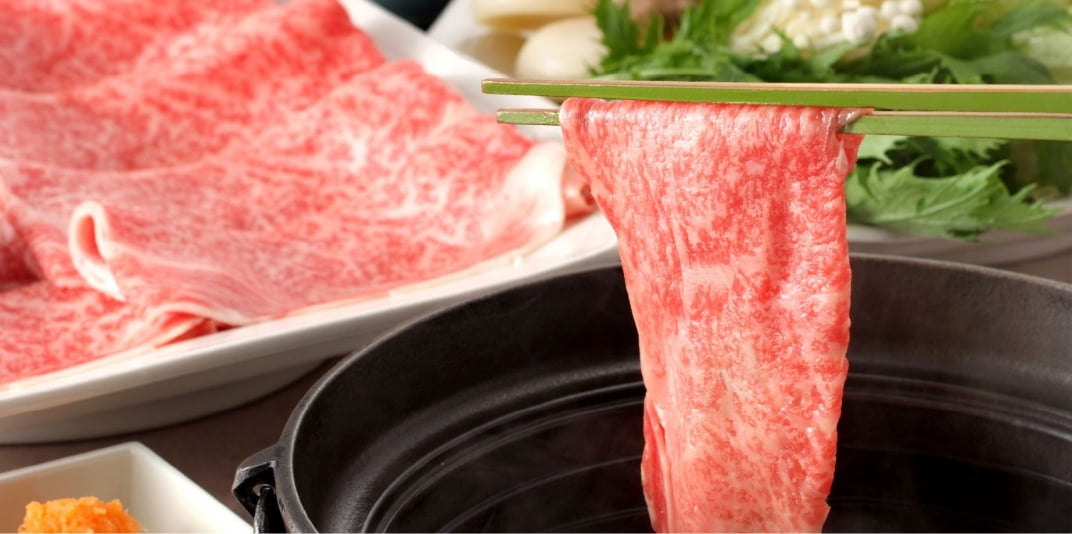
Discovering Saga

Tourist attractions

Experiences

Gourmet specialties

Accomodation
How to get there.
Saga Airport has flights to Tokyo (Haneda Airport), Shanghai, South Korea, and Taiwan. You can also visit Saga Prefecture by train, bus, or car via Fukuoka Airport, which is located in the neighboring prefecture and has many flights arriving and departing from each city.
Please check the Kyushu Saga International Airport website for flight details (external link)
Railway JR/Shinkansen
The main route from Tokyo/Osaka is to take the Shinkansen (Tokaido/Sanyo) via Fukuoka/Hakata Station, then take the Kyushu Shinkansen from Shin-Tosu Station. Alternatively, you can take the limited express bound for Sasebo/Huis Ten Bosch. For the Karatsu area, we suggest you to use the JR Chikuhi Line.

Please select your place of departure
Please select your destination, saga travel support call center.

Information about automatic translation
The Saga Prefecture tourism website uses an automatic translation service. For further details, please check the" [Official] Saga Prefecture tourism website. "
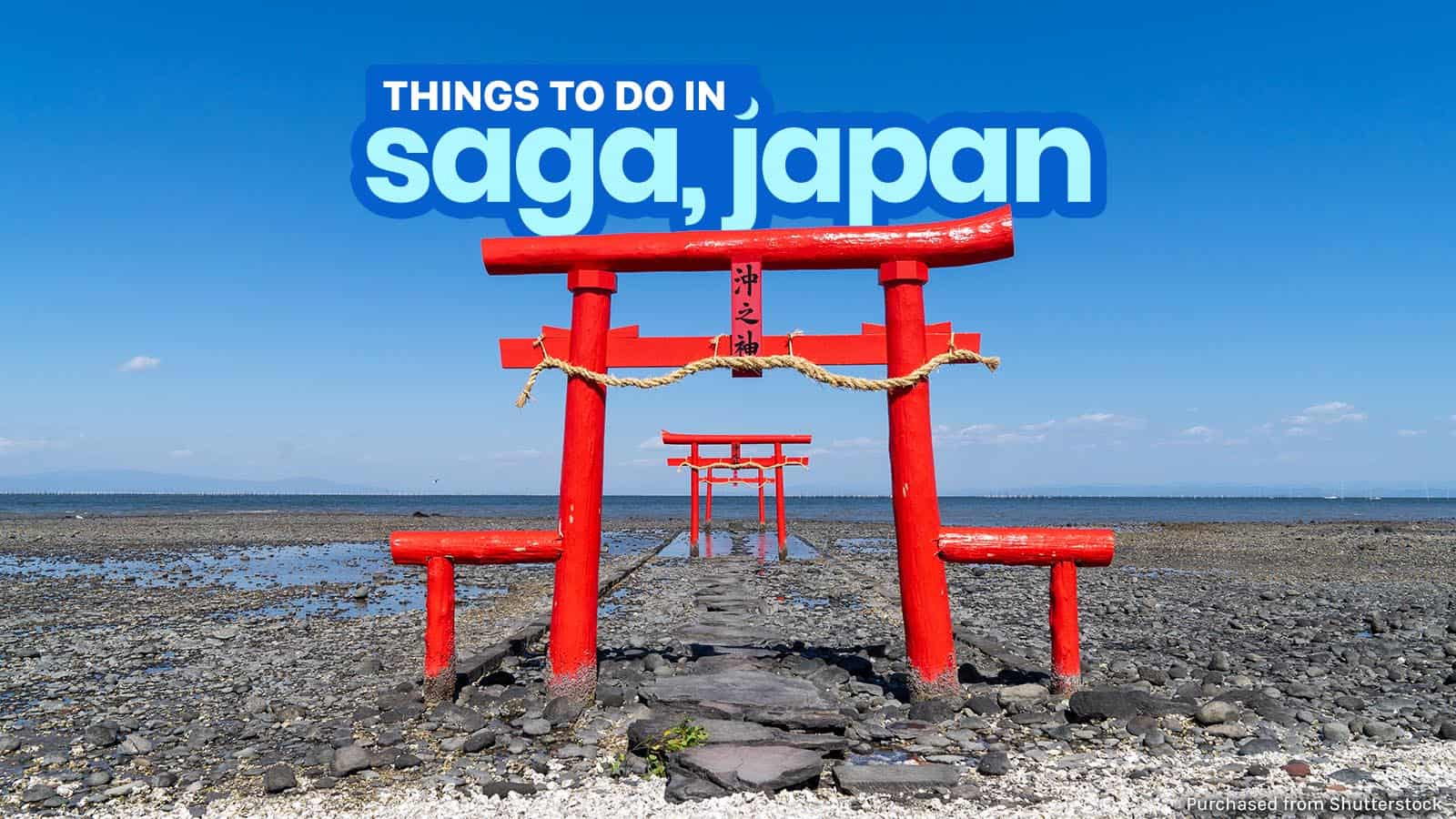
13 BEST THINGS TO DO in SAGA, JAPAN

It was Gerald Anderson and Julia Barretto who introduced Saga to me. In the film Between Maybes , this humble, little-known prefecture became the setting of an unlikely romance. While Saga’s rustic charm sure feels cinematic, there is definitely more to this unassuming destination than what can be captured on cam.
Saga is one of the seven prefectures that make up Kyushu Island. Located in the northwestern side of the island and situated next to Fukuoka, it is easily accessible. However, most tourists coming from Fukuoka, considered the primary gateway to Kyushu, breeze past this often overlooked destination in favor of Nagasaki. But there are many reasons to stop and take your time in Saga. Here are some of them.
WHAT'S COVERED IN THIS GUIDE?
Mifuneyama Rakuen
This was our most unforgettable stop in Saga. We visited in late November, so the entire site was clad in the fiery colors of fall.
Mifuneyama Rakuen is a picturesque garden in the shadows of Mt. Mifuneyama, a postcard-worthy mountain that looks like the hull of a ship. Completed in 1845, this was originally built as the holiday home of Shigeyoshi Nabeshima, a feudal lord. Spanning 50 hectares, this sprawling park takes pride in its walking trails that will take you around the site including a still pond that mirrors its breathtaking surroundings perfectly.
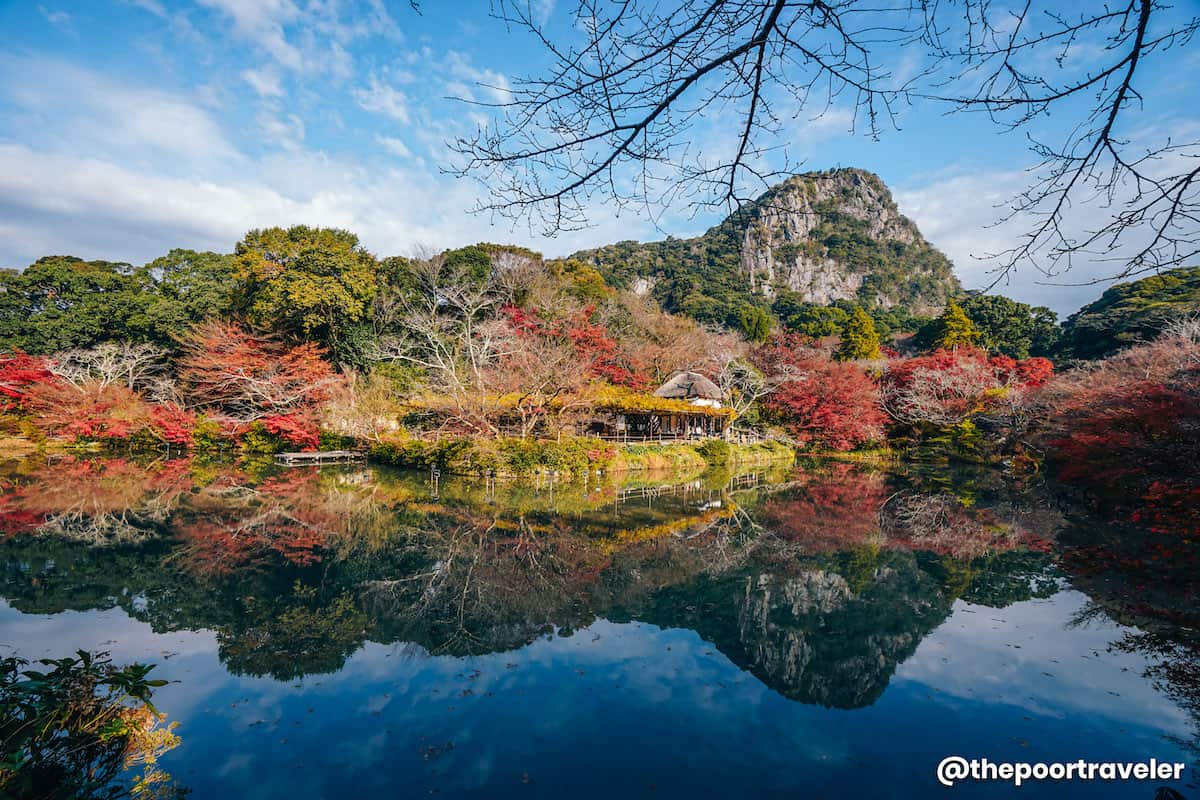
The best time to visit is spring, when the cherry blossom trees — all 5000 of them — reach the peak of their bloom. Aside from the sakura season, autumn is also a great time as the trees paint the site red and orange.
Entrance fee: ¥600 Hours open: 8am-5pm (may change on certain dates) Nearest station: Takeo-Onsen Station.
Yutoku Inari Shrine
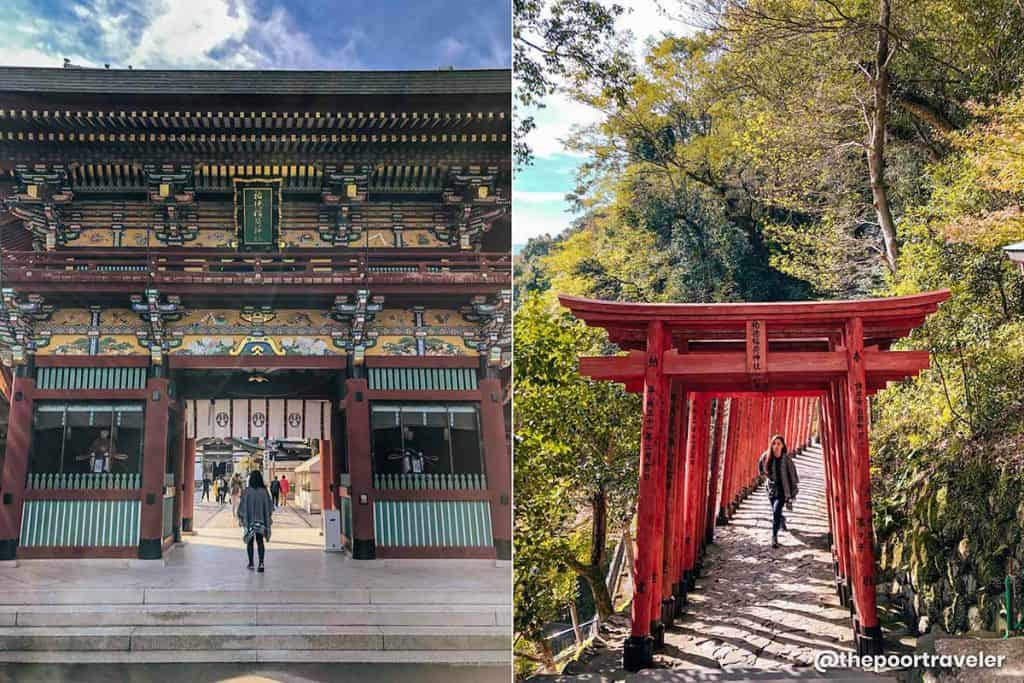
Welcoming over three million visitors annually, Yutoku Inari Shrine is undoubtedly one of the three most popular Inari shrines; the other two are Kyoto’s Fushimi Inari Shrine and Aichi’s Toyokawa Inari Shrine. Most visitors flock to the Shinto shrine to ask for good family fortune, good business, traffic safety, and a huge catch. The whole complex is stunning. It has a gate, a bridge, a garden, small ponds, the main building, a museum, the numerous dark orange (or red) torii gates, and other beautiful buildings.
Admission Fee: FREE; For the Yutoku Museum: ¥300 (Adult) / ¥200 (Students) / ¥100 (7-15 y/o); For the Garden: ¥200 Opening Hours: 9:00 AM – 4:30 PM Location: 1855, Furueda, Kashima City, Saga Prefecture Nearest Station: JR Hizen-Kashima Station. Travel time from JR Hakata Station to JR Hizen-Kashima Station is about an hour via Limited Express Train Kamome for around ¥3200. From the station, take the bus to Yutoku Inari Shrine. The bus fare is ¥320.
Saga Prefectural Government Office
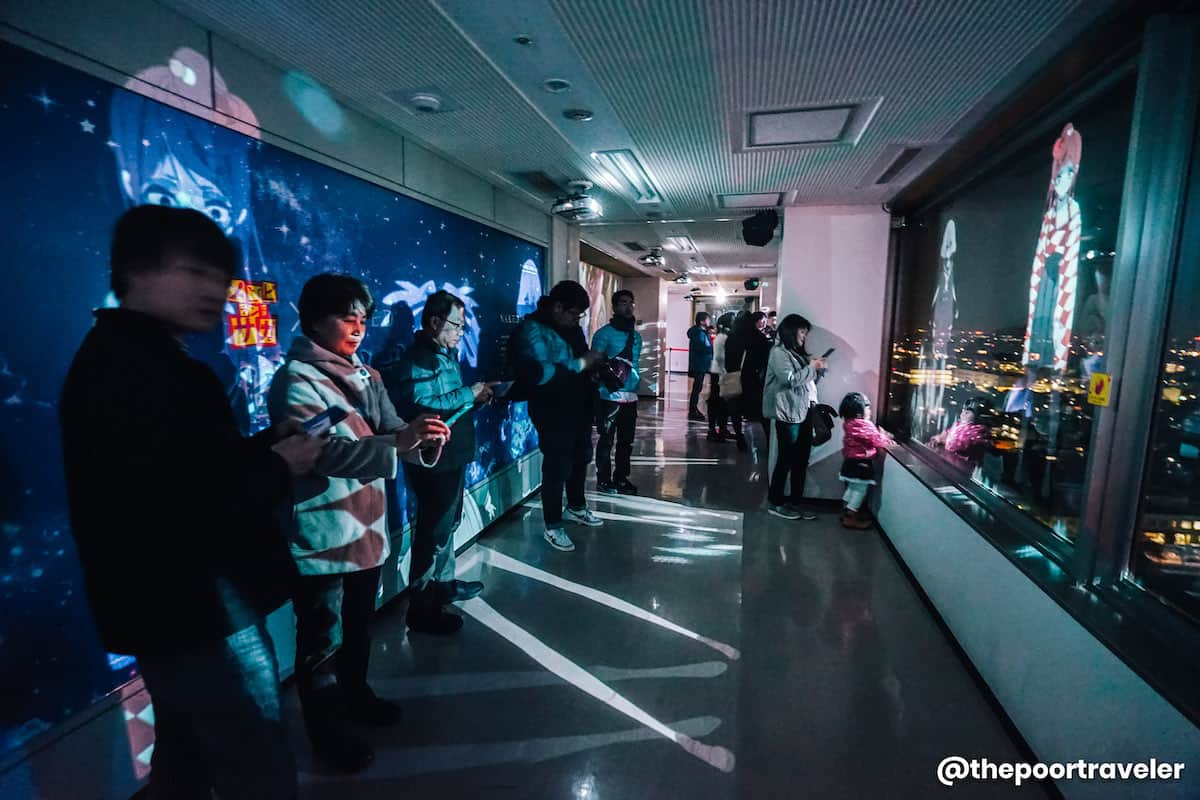
What will you be doing at a government office, you ask? The Saga Prefectural Government Office offers a 360-degree, unobstructed view from its observation floor (called Saga 360). To manage your expectations, it isn’t that tall. It stands only 50 meters, but it is the tallest building in the city. If the weather cooperates, you can even see Mt. Unzen, an active volcano in Nagasaki Prefecture.
If you can, visit at around sunset when the city is bathed in golden light. After admiring the vista, have a taste of Saga’s rich, delectable cuisine at Shino, a restaurant on the same floor. You can dig into some tender, juicy Saga beef and delicious sashimi.
If you visit at night, you can also enjoy a projection mapping show! More about that in the next section.
Observation Hall Operating Hours: Weekdays, 8:30am-10pm; Saturdays, 10am-10pm; Sundays, 10am-9pm
Nearest train station: JR Saga Station. From here, you can take the bus from nearby Bus Center to Kencho-mae bus stop. It’s a short walk from there. You can also walk straight from Saga Station, but it’s gonna take at least 20 minutes.
Zombie Land Saga
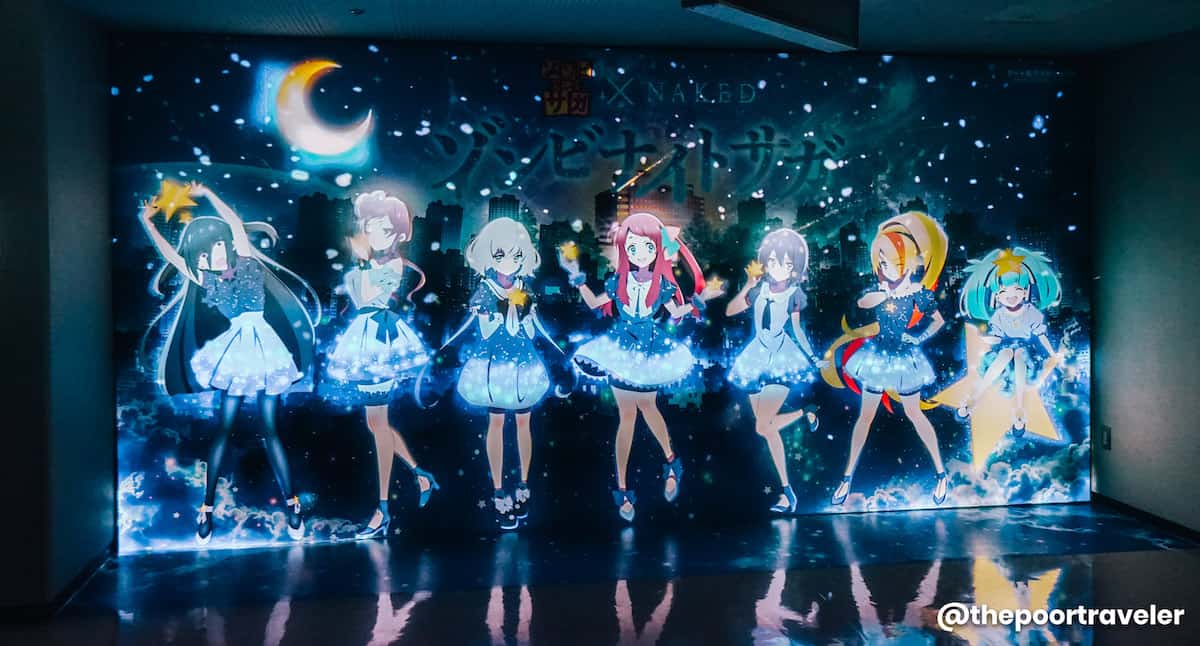
Over the past few years, one of the anime shows that made the biggest waves in Japan is Zombie Land Saga , which tells the story of Sakura Minamoto, a high school student who met an untimely death on the way to an audition. Years later, she was resurrected together with other zombies to form a 7-piece singing group called Franchouchou and promote Saga Prefecture.
That’s a very odd story concept — outrageous, even — but I have to admit that it’s very interesting. Obviously, this is fiction (duh), but the great thing about it is, Saga Prefecture embraced it!
In fact, at the observation deck of the Saga Prefectural Government Office building, you can enjoy a projection mapping show featuring Zombie Land Saga. It culminates in an exclusive animated concert. But that’s not all.
Because many of the settings in the series were based on actual locations that exist in Saga, these places instantly became tourist sites as more anime fans flood in. One of them is the former Karatsu City Historical Folk Museum, which was featured on the show as Franchouchou’s home base. Other spots include Karatsu Castle and Drive-in Tori.
Saga Balloon Fiesta
Another thing that Saga is famous for? Hot air baloons!
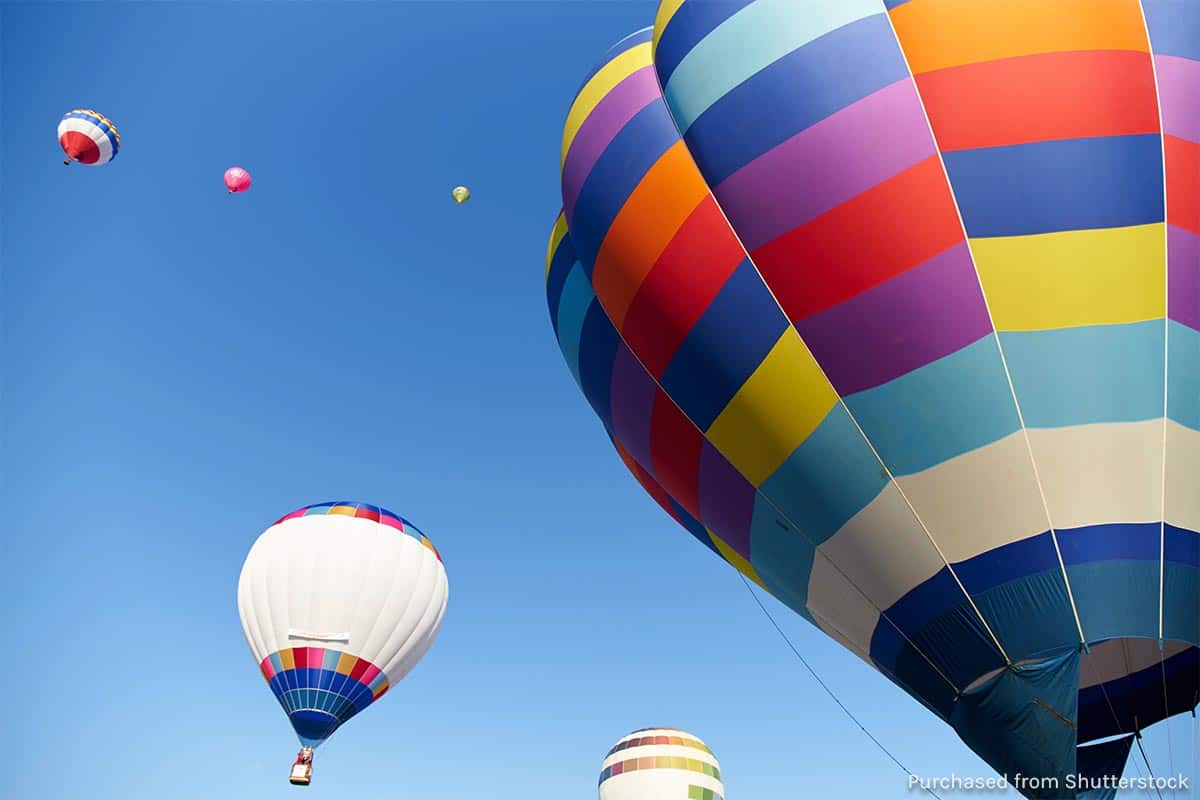
Every year for the past 40 years, the Saga International Balloon Fiesta is held in Saga City. This is Asia’s largest hot air balloon competition, and pilots from all around the world participate. Visitors flock to this part of Kyushu to admire the countless hot air balloons decorating the skies. This happens for five days, usually in October or November.
Saga Balloon Museum
If your timing is a bit off, you can pay a visit to the Saga Balloon Museum instead and enjoy life-like videos of the balloon fiesta! Opened to the public in 2016, this is the very first of its kind in Japan featuring flight simulators and exhibits narrating the history of ballooning in Saga.
Entrance fee: 500 yen Hours open: 10am-5pm Closed: Mondays and New Year holidays Address: 2-27 2chome, Matsubara, Saga City Nearest train station: JR Saga Station. From here, you can take the bus from nearby Bus Center to Kencho-mae bus stop. It’s a short walk from there. You can also walk straight from Saga Station, but it’s gonna take at least 20 minutes.
Sagajoka Hinamatsuri (Doll Festival)
Another annual event you should try to catch is the Sagajoka Hinamatsuri (Saga Castle Town Doll’s Festival), which happens around the Saga Castle area, the Chokokan and Nagasaki Kaido.
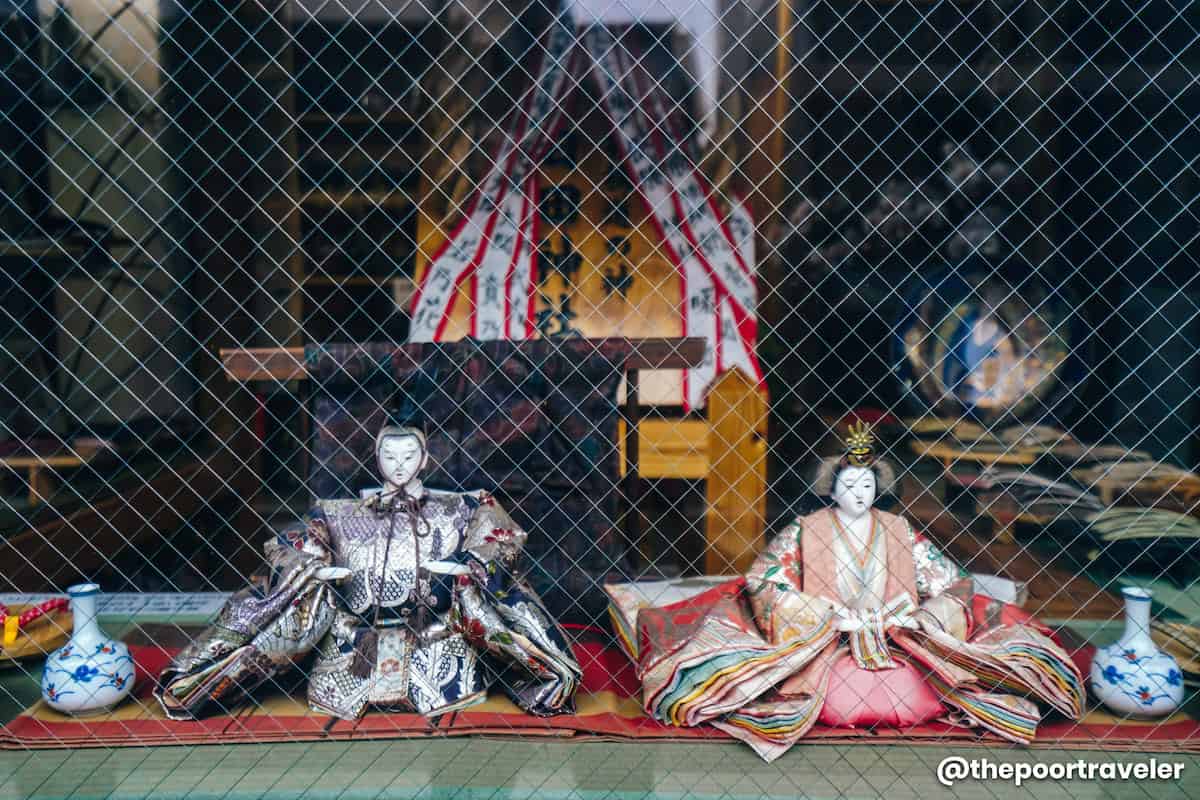
Held from mid-February to mid-March, the festival ushers in the spring season. During the celebration, hundreds of elegant traditional dolls are put on display including those from the house of Nabeshima, one of the most powerful clans back in the day, and silver doll accessories from the Kuroda clan of Fukuoka.
Ōuo Shrine (Floating Torii Gates)
Aside from delicious fresh seafood, the town of Tara is home to Ōuo Shrine , best known for its vermilion torii gates.
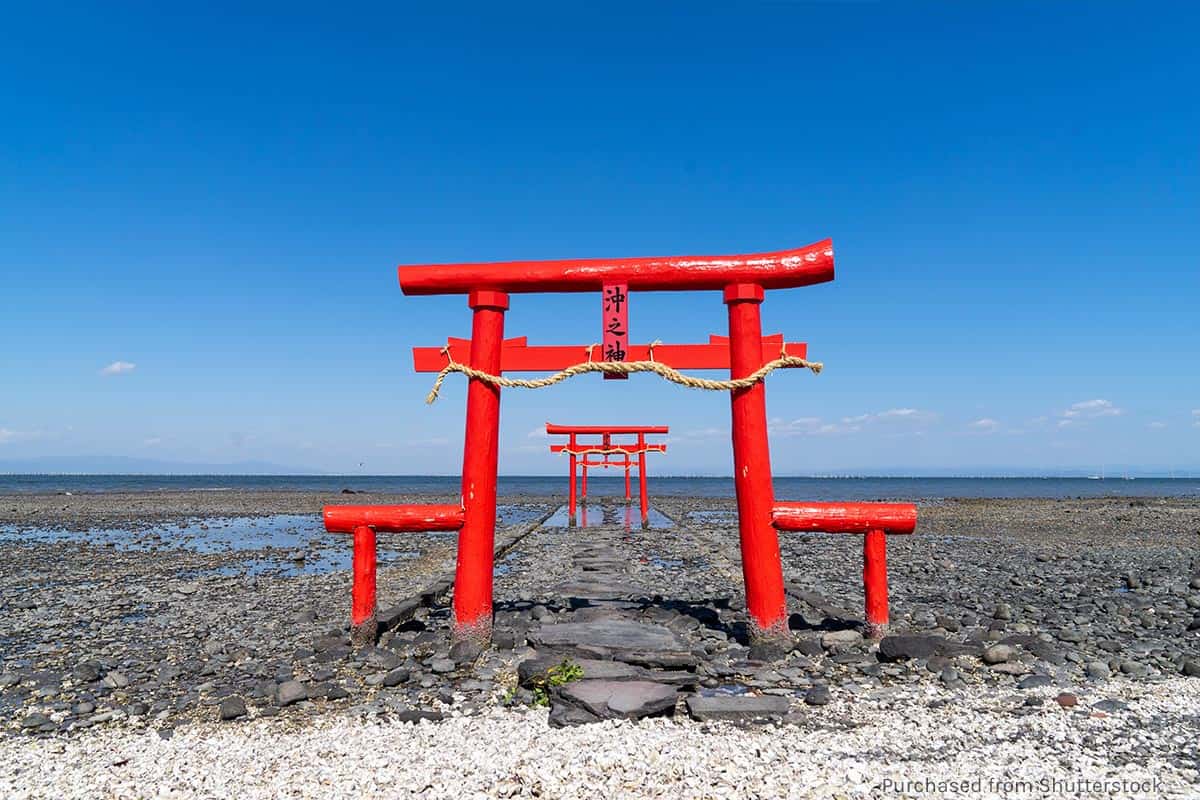
Legend has it that in the 1700s, a hated magistrate was abandoned in Okinoshima, an island in the middle of Ariake Sea off the coast of Saga. Seeing no sign of rescue, he prayed for salvation. A giant fish appeared and saved him. When he got back to Tara, he built the Ōuo Shrine in honor of the fish. Ōuo means “big fish”. The torii gates are arranged in a way that points to Okinoshima Island, where it all started, according to legend, that is.
The place is more popularly called “Floating Torii Gate of Oouo Shrine” because at high tide, they appear to be floating as the water rises above the base of the structures. But at low tide, you can walk through the gates on dry land.
Address: 1874-9 Tara Oaza, Tara, Tara-cho, Fujitsu-gun, Saga Prefecture
Nearest station: Tara Station
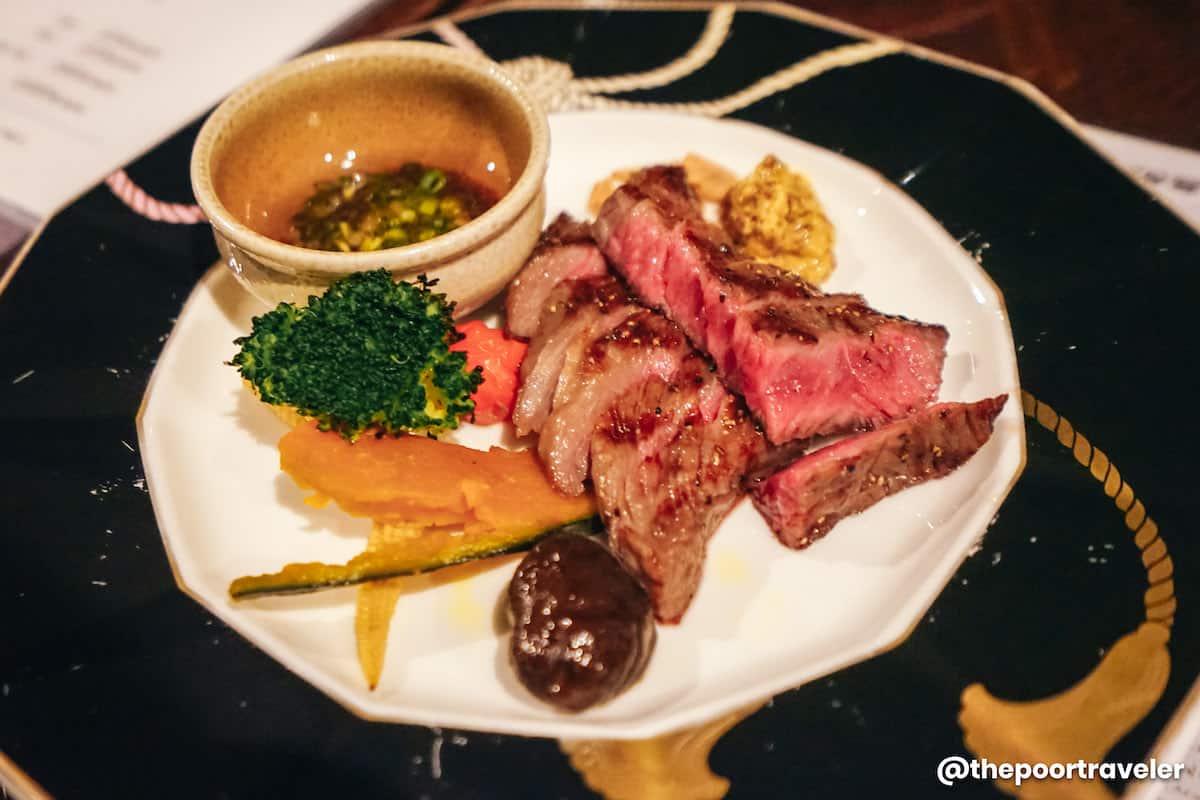
When it comes to Japanese wagyu, the first things that would come to mind are Kobe beef or Matsusaka beef. But Japan boasts other brands that are also celebrated for their high quality. One of them is Saga beef .
Like Kobe beef, Saga beef comes from Japanese black cattle raised and fed in the prefecture’s ideal environment. Like the top quality wagyu brands, it is best known for the beautiful marbling of meat and fat, bright flavor, and tender, almost melt-in-your mouth texture.
Sicilian Rice
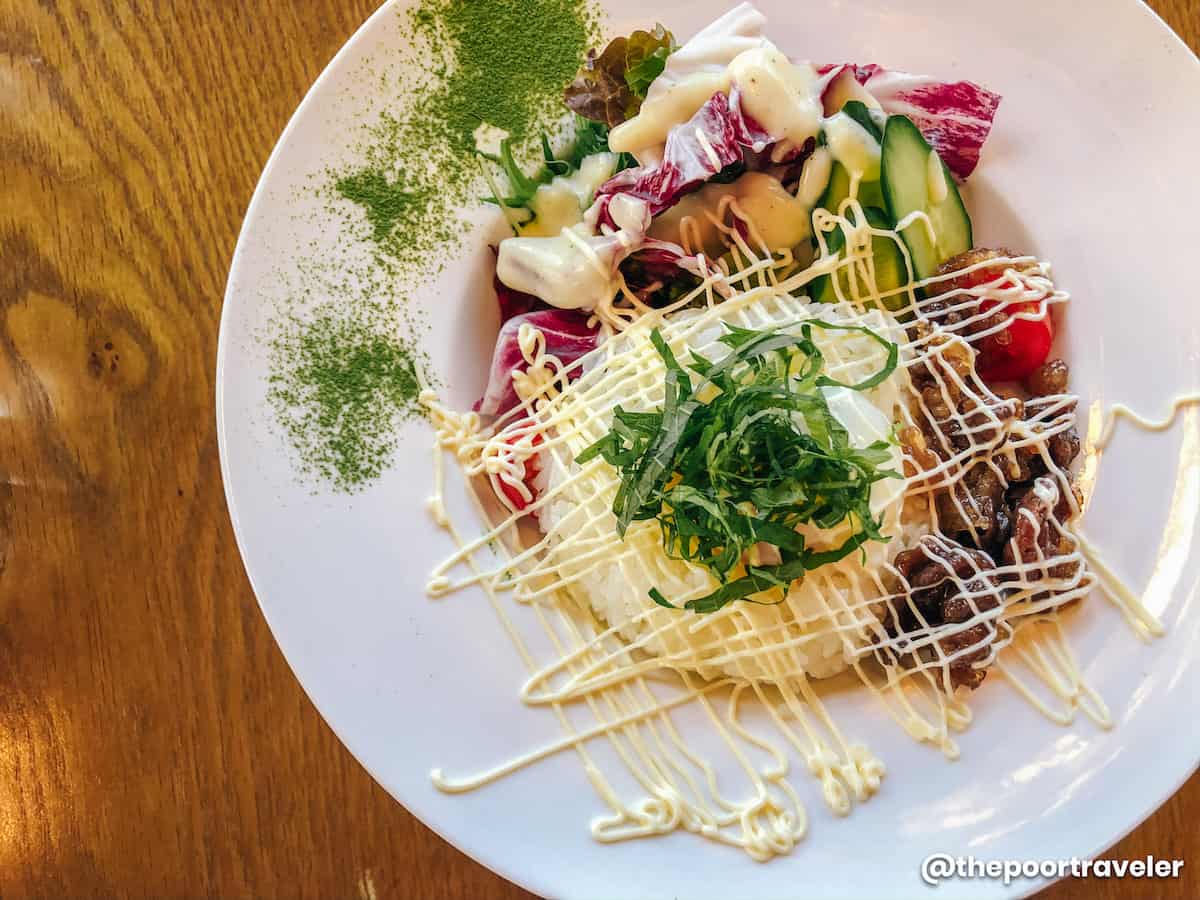
Another Saga delicacy that you should try is the so-called Sicilian Rice. No one really knows exactly where it got its name or how it is related to the Italian island halfway around the world, but it has become a regional specialty.
Sicilian rice is pretty simple — rice topped with fried meat, vegetable salad, and a sprinkle of mayonnaise. Each restaurant serving it has their own version, topping it with a more complex dressing or changing the type of meat. More upscale establishments serve it with Saga beef or wild boar meat, others with regular beef or chicken. Some add other ingredients. But at its core, it’s composed of rice, meat, and salad.
Ureshino Tea
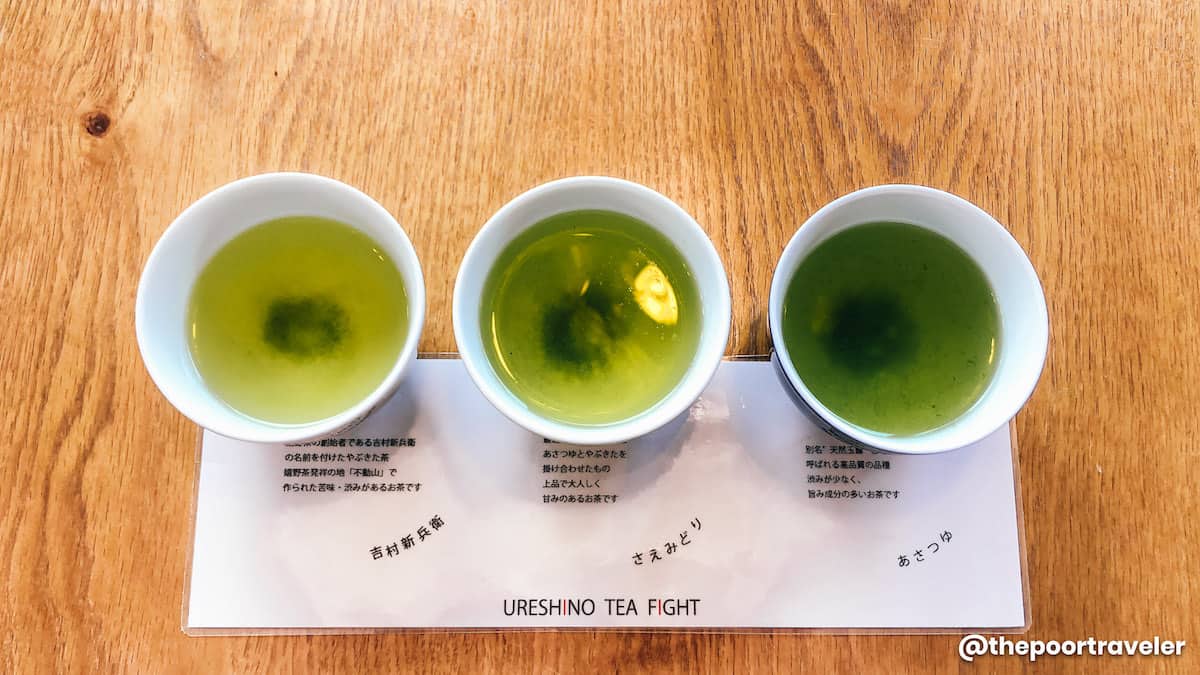
Many cities in Japan lay claim to the origin of Japanese green tea. Uji in Kyoto and Hirado City in Nagasaki are both marketed as the birthplace of this well-loved drink. But Saga Prefecture cannot be discounted. Like the other cases, Saga’s claim is rooted in Eisai, a monk credited for bringing tea leaves from China. One of the places where he is believed to have planted tea plants was Mt. Sefuri, located in Kanzaki, Saga. Later on, it spilled over to neighboring Ureshino, which embraced it wholeheartedly and took it to another level.
Today, there is a strong tea culture in this part of Saga. Ureshina has the right conditions for growing quality tea. Its landscapes are dominated by terraced countrysides, covered in groves.
Green tea is served in most establishments in Saga. Some even serve samplers, like KiHaKo of YOSHIDAYA Cafe, which will allow you to taste three types of local green tea.
Ureshino Onsen
Tea isn’t the only thing that keeps the town of Ureshino hot and steaming. It’s also famous for hot springs!
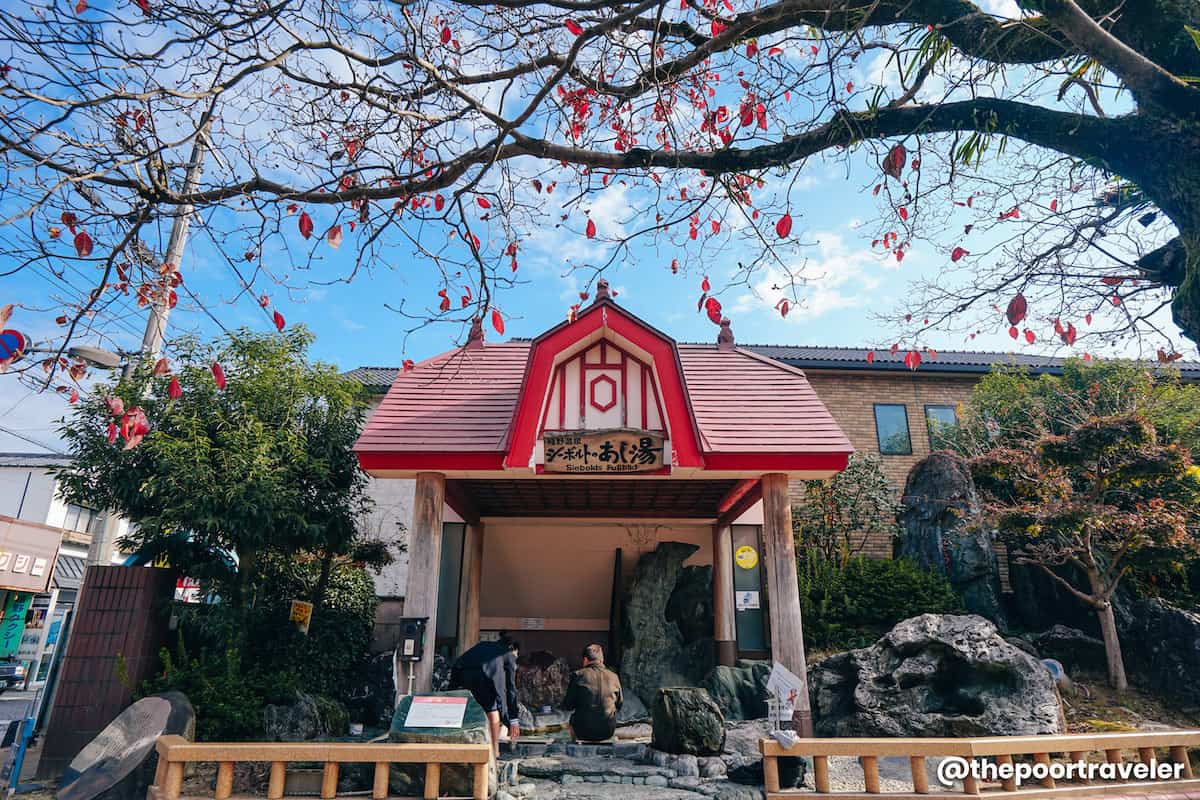
Ureshino Onsen is a hot springs town in southern Saga. Like most onsen towns, it is great place to just take a dip, relax, and recharge. But Ureshino’s alkaline water is also believed to have great benefits to the skin. Around 60 ryokan and other establishments dot the map of the town.
When using an onsen, always remember the following:
- No bathing suit or underwear allowed. Strip down to your birthday suit. The thought of going completely naked can be unsettling, but trust me, no one gives an eff.
- Wash and shower before you take a dip. Sit on the provided stool while you wash. You’ll find liquid soap and shampoo near every shower space.
- No swimming, jumping, diving, or any other disturbing activity!
- Don’t let your hair or towel touch the water.
- No loud noises. Keep quiet.
- Dry yourself with a towel before heading back to the locker room.
In most public onsen, people with tattoo are not allowed, at least not those with the big ones.
You’ll also find foot bath facilities around town!
Tosu Premium Outlets
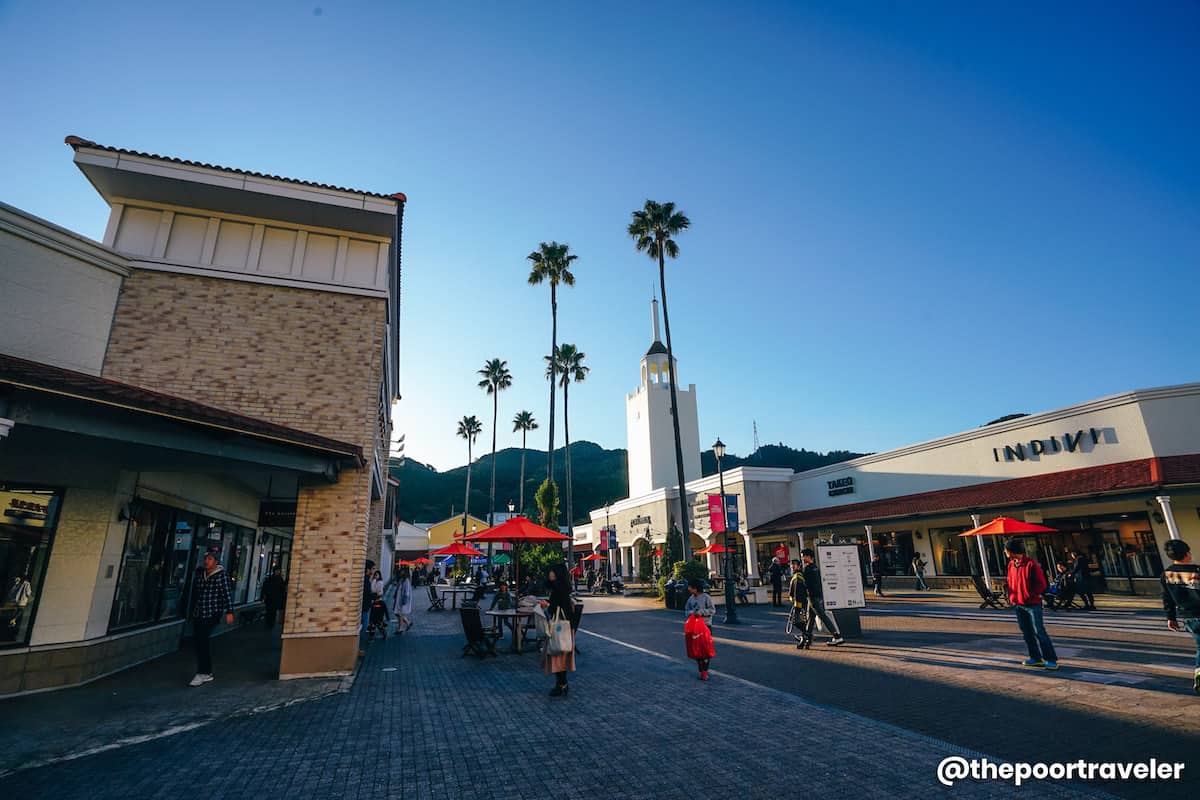
Modeled after a Southern California town, the site feels a bit out of place in Saga, but it is one of the most popular shopping stops in this part of Kyushu. This vast shopping destination houses 160 outlet stores featuring both Japan’s homegrown brands and international labels including Coach, Gap, Citizen, Kate Spade, Vans, Under Armour, Ralph Lauren, Seiko, and Takeo Kikuchi.
If you’re not that much of a shopaholic (like us), there’s a food court where you can stuff your face with ramen, takoyaki, and more!
Hours open: March-January 10am-8pm; February, 10am-7pm Address: 8-1, Yayoigaoka, Tosu-shi, Saga, Japan Nearest train station: Yayoigaoka Station. From here, you can take the bus to Tosu Premium Outlets.
How to Get to Saga
Saga has its own airport, Saga Airport (HSG) , but it serves a very limited number of flights, mostly to and from Tokyo, Taipei, Shanghai, and Incheon. If you’re coming from other cities overseas, you are most likely going to land in Fukuoka International Airport (FUK) .
From here, you need to get to Hakata Station. Here’s how.
Once you’re at Hakata Station, catch a train to Saga. If your destination is Saga City, the cheapest way is by boarding the Limited Express Kamome train. Travel time: 40-50 minutes. Fare: ¥1,130 (one way) Seat Fee: ¥840 (unreserved) Total cost: ¥1,970 (one-way)
To see the schedule, you can check Hyperdia .
If you’re traveling from Fukuoka to Saga or you plan to explore many parts of Saga Prefecture and other prefectures, consider getting a JR Kyushu Rail Pass to save a lot on fares! On our most recent trip, JR Kyushu shouldered our journeys by giving us a free JR Kyushu Rail Pass so we could use it first-hand and see for ourselves how far it could take us.
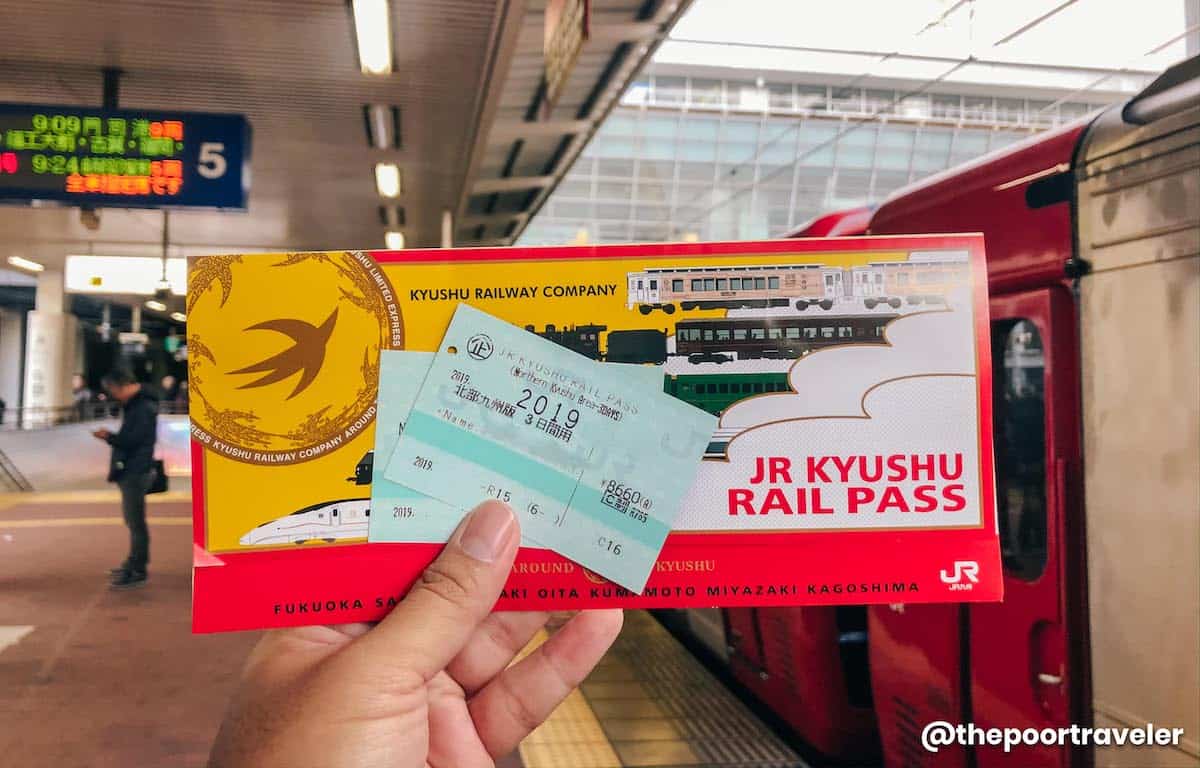
The JR Kyushu Rail Pass comes in three versions: Northern, Southern, and ALL Kyushu. But let’s focus on the two passes only: Northern and ALL Kyushu.
- If you’re interested to see Saga, Fukuoka, Nagasaki and the northern halves of Oita and Kumamoto prefectures, the JR NORTHERN KYUSHU AREA PASS should be enough. – Can be used for: Local trains, limited express trains, and Hakata-Kumamoto Shinkansen – Price: ¥8660 (3 days); ¥10,190 (5 days) – Number of seat reservations allowed: 10 (for 3 days), 16 (for 5 days)
- If you’re also going to Miyazaki and Kagoshima, consider getting the ALL KYUSHU AREA PASS instead. – Can be used for: Local trains, limited express trains, and Hakata-Kagoshima-chuo Shinkansen – Price: ¥15,280 (3 days); ¥18,330 (5 days) – Number of seat reservations allowed: 10 (for 3 days), 16 (for 5 days)
To give you an idea on how much savings you can get, here’s an example. Let’s say that you’re visiting both Saga ang Nagasaki.
- Fukuoka to Saga City: ¥1970
- Saga to Nagasaki: ¥3420
- Nagasaki to Hakata (Fukuoka): ¥4270
- TOTAL: ¥9660 (with unreserved seats)
But the NORTHERN KYUSHU AREA PASS costs only ¥8660. For this route alone, this pass will give you ¥1000 savings. On top of that, it also allows you unlimited access to JR trains to explore other parts of Kyushu and up to 10 seat reservations. All the other additional train ride you’re gonna take can be considered savings.
You can purchase via Klook. You can book any of three versions through the link below.
How to Get to Fukuoka
For international travelers, Fukuoka is the gateway to Saga. If you’re flying from Manila, Cebu Pacific offers some of the cheapest flights to Fukuoka. Travel time is about three hours.

Getting to the city center (Hakata/Tenjin) from Fukuoka Airport is very easy. You can take the subway, the bus or the taxi. It will take about thirty minutes from the airport to either Hakata or Tenjin. You can read the detailed post on how to get to the city center from the airport here: FUKUOKA AIRPORT to HAKATA STATION & TENJIN: By Bus, Subway & Taxi
Special thanks to JR Kyushu , Kyushu Tourism Promotion Organization , and Cebu Pacific for making our Kyushu trip possible! Opinions are our own.
2020 • 1 • 25
More Tips on YouTube ⬇️⬇️⬇️
Is this post helpful to you?

Related Posts:
- 11 DAY TRIP DESTINATIONS FROM FUKUOKA
- 15 MUST-TRY FOOD TREATS IN KYUSHU (Fukuoka, Nagasaki, Kumamoto, Oita & Saga)
- The Emperor’s New Year Greeting: Imperial Palace, Tokyo, Japan
- HOW TO RENEW JAPAN VISA & Other Frequently Asked Questions
- HOW TO GET TO DISNEYLAND from Tokyo Downtown or Airport
- TAKAYAMA TRAVEL GUIDE: Budget Itinerary & Things to Do
- KYOTO TRAVEL GUIDE: Budget Itinerary, Things to Do
- 12 BEST THINGS TO DO in KANAZAWA, JAPAN

- Recent Posts
- 2024 Philippine Airlines PROMO: Get 50% OFF on PAL Domestic Flights! - 16 May 2024
- 2024 NAIA Departure Guide for International Passengers (Manila Flights) - 10 May 2024
- 2024 Cebu Pacific Promos & PISO SALE with Number of Seats Available - 10 May 2024
Featured On

We heard you!
Your comment is now queued for moderation! We’ll try to get back to you soonest. While waiting, follow us on these channels.
Subscribe on Youtube! Follow us on Instagram!


- Meet The Team
Things to Do in Saga Prefecture: Exploring the Best Attractions
Updated on February 15, 2024

Things to Do in Saga Prefecture: If you’re looking for a unique travel destination in Japan, Saga Prefecture should be on your list.
Located in the northwestern corner of Kyushu island, Saga is known for its historical sites, natural beauty, cultural experiences, and delicious local cuisine.
Saga City is the prefecture’s capital and a great place to start your journey.
Visit Yoshinogari Park to explore the remains of an ancient village and learn about Japan’s Yayoi period.
Then head to Saga Castle Hommaru History Museum to discover the history of the castle and the region.
If you’re a fan of nature and the outdoors, Saga Prefecture won’t disappoint.
Karatsu Bay offers stunning views of the sea and mountains.
And if you’re looking for a relaxing experience, check out one of the many onsen towns in the prefecture, such as Takeo or Ureshino.
Key Takeaways
- Saga Prefecture offers a unique travel experience with its historical sites, natural beauty, cultural experiences, and local cuisine.
- Saga City is a great starting point, with attractions like Yoshinogari Park and saga castle history museum.
- Nature lovers will enjoy Mikaeri Falls and Karatsu Bay, while onsen towns like Takeo and Ureshino offer relaxation and rejuvenation.
Saga City is the capital of Saga Prefecture and is located in the northwest of the island of Kyushu.
The city is home to a variety of cultural and historical attractions that are worth exploring.
While not a huge city, a stroll though downtown saga is worthwhile.
Here are some of the top things to do in Saga City.
Saga Castle
Saga Castle is a historic castle that was built in 1591.
It’s the largest wooden castle in Japan.

Although the castle was destroyed in 1874, the Honmaru (main keep) was reconstructed in 2004.
The Honmaru is now a museum that houses artifacts and exhibits about the history of Saga Castle and the surrounding area.
Also check out the killer whale gate, an important cultural property of Japan.
Finally, enjoy a panoramic view of the city from the observation deck located on the top floor of the Honmaru.
To learn more, check out the Saga Castle History Museum .
Saga Balloon Museum
The Saga Balloon Museum is a unique museum that showcases the history and science of hot air balloons.
The museum features interactive exhibits, a planetarium, and a flight simulator that allows visitors to experience the thrill of ballooning firsthand.

You can also take a ride in a tethered balloon and enjoy a bird’s-eye view of the surrounding area.
Historical Sites
If you are interested in history, Saga Prefecture has several historical sites that you can visit. Here are three must-visit historical sites:
Karatsu Castle
Karatsu Castle is a Japanese castle located in Karatsu City, Saga Prefecture.
It was built in 1608 during the Edo Period and is one of the few remaining castles in Japan that still has its original keep.

The castle offers a great view of Karatsu City and the surrounding area.
The castle grounds also have a museum where you can learn about the history of the castle and the area.
Yoshinogari Park
Yoshinogari Park is an archaeological site located in Yoshinogari, Saga Prefecture.
It is one of the largest Yayoi Period (300 BC-300 AD) sites in Japan.

The park has reconstructed buildings and houses from the Yayoi Period , and you can see how people lived during that time.
The park also has a museum where you can learn about the history of the area.
Nature and Outdoors
When it comes to experiencing the natural beauty of Saga Prefecture, there are plenty of options to choose from.
Here are some of the top outdoor activities that you should consider during your visit.
Mifuneyama Rakuen
Mifuneyama Rakuen is a beautiful garden located in Takeo City.
This park has stunning cherry blossom trees, which bloom in the spring and attract visitors from all over Japan.
In addition to the cherry blossoms, the park also features a variety of other flowers and plants, as well as several observation decks that offer panoramic views of the surrounding area.

Whether you’re looking for a peaceful place to relax or a scenic spot to take photos, Mifuneyama Rakuen is definitely worth a visit.
If you’re looking for a more active outdoor adventure, consider heading to the Ariake Sea.
This large body of water is located on the western side of Saga Prefecture and is a popular destination for fishing, boating, and other water sports.

The surrounding area is also home to several parks and picnic areas where you can enjoy a leisurely afternoon with friends and family.
Terraced Rice Fields
For a more traditional outdoor experience, consider visiting the terraced rice fields that are found throughout Saga Prefecture.
These fields are not only beautiful to look at, but they also play an important role in the local economy and culture.

Many farmers in the area still use traditional methods to cultivate their rice crops, and visitors can learn more about these practices by taking a guided tour or visiting a local museum.
Overall, whether you’re looking to relax and take in the natural beauty of Saga Prefecture or get active and explore the great outdoors, there are plenty of options to choose from.
So pack a picnic, grab your camera, and get ready to experience some of the most stunning natural landscapes that Japan has to offer.
Onsen Towns
If you’re looking for a relaxing getaway, Saga Prefecture is home to some of the best onsen towns in Japan.
Here are two of the best:
Takeo Onsen
Takeo Onsen is one of the oldest hot springs in Japan, with a history dating back over 1,300 years.
The hot spring waters here are said to have healing properties, and the town is famous for its beautiful Japanese gardens.

Takeo Onsen is also home to a number of ryokans (traditional Japanese inns) where you can stay overnight and enjoy the hot springs.
Ureshino Onsen
Ureshino Onsen is another popular onsen town in Saga Prefecture.
Discover the rejuvenating hot spring waters renowned for their luxurious, skin-nourishing properties.
Immerse yourself in Ureshino Onsen’s embrace, where the surrounding beauty of cherry blossom trees and tea fields complements the experience.

This town, celebrated for its locally grown green tea, invites you to savor this specialty at the numerous cafes and restaurants.
Both Takeo Onsen and Ureshino Onsen provide an array of hot spring baths catering to your preferences. Enjoy indoor and outdoor baths, along with private bath options perfect for couples or families.
Some hot springs offer mixed-gender bathing, while others provide gender-segregated facilities.
No matter which onsen town you choose to visit, be sure to follow proper onsen etiquette .
Cultural Experiences
When visiting Saga Prefecture, you will have the opportunity to immerse yourself in the local culture and traditions.
Here are two cultural experiences you won’t want to miss:
Arita Porcelain
Arita is a small town in Saga that is famous for its Japanese porcelain.
The town has been producing porcelain for over 400 years.
It is considered to be some of the finest in Japan.

During the fiesta, you can take a balloon ride yourself or simply watch as the balloons float overhead.
There are also other activities to enjoy, such as live music performances, food stalls, and fireworks displays.
The fiesta is a family-friendly event, and there are plenty of activities for children to enjoy.
Religious Sites
If you’re interested in exploring the religious and spiritual side of Saga Prefecture, you’ll find plenty of fascinating sites to visit.
Here are two of the most noteworthy:
Yutoku Inari Shrine
One of the most famous and popular religious sites in the area is the Yutoku Inari Shrine.
Explore this Shinto shrine devoted to Inari, the deity of fertility, prosperity, and agriculture.

Visitors can explore the shrine’s various buildings and grounds, including a beautiful garden and a large pond filled with koi fish.
This shrine is super popular with over three million visitors annually.
Another must-visit religious site in Saga Prefecture is the Ouo Shrine.
This shrine is dedicated to the god of water.
What’s more, it’s known for its beautiful natural setting, which includes a large pond and a forest of towering trees.
Visitors can explore the shrine’s various buildings and grounds.
Including a large torii gate and a number of smaller shrines dedicated to various deities.

People participate in the annual water-drawing ceremony held at the shrine in early February .
If you have an interest in Buddhism, or Shinto shrines, or want to explore the spiritual side of Saga Prefecture, you can find plenty of things to see and do at these fascinating religious sites.
Local Cuisine
When visiting Saga Prefecture, you will find a variety of delicious dishes and local food that is sure to satisfy your taste buds.
Experience the exquisite Saga beef, a saga delicacy.
This is a renowned type of wagyu beef celebrated for its marbling and tenderness.
Farmers in Saga Prefecture raise this high-quality beef, which ranks among Japan’s finest.

Fresh Seafood
Saga Prefecture is located near the sea, which means that fresh seafood is abundant and readily available.
Some of the most popular seafood dishes include mudskipper, which has a refined taste that is unexpected and delicious.

You can also try fresh oysters, clams, and squid, which are often served raw or grilled.
The Yobuko Fish Market is a must-visit for seafood lovers, where you can find a variety of fresh seafood to try.
This is a Japanese delicacy that consists of thinly sliced raw fish.

Saga Prefecture is known for its high-quality sashimi, which is made using fresh seafood caught in the nearby sea.
Some of the most popular types of sashimi in Saga include squid, tuna, and mackerel.
You can try sashimi at various restaurants throughout the prefecture.
Shopping and Souvenirs
When it comes to shopping, there are plenty of options to choose from.
Whether you’re looking for unique souvenirs or high-end fashion, you’ll find it all here.
If you’re a fan of Japanese sweets, be sure to try some of the local specialties, such as karukan (a sweet made from sweet potato flour) or ikinari dango (a type of sweet dumpling).

You can find these treats at specialty shops throughout the prefecture.
For those looking for more mainstream shopping options, Saga has several large malls and department stores.
One of the most popular is Aeon Mall Saga.
It has over 200 shops and restaurants, as well as a movie theater and bowling alley.
Accommodation and Transportation
When planning your trip to Saga Prefecture, it’s important to consider your accommodation and transportation options.
Accommodation
Saga Prefecture has a range of accommodation options, from budget-friendly hostels to luxurious resorts.
If you’re looking for a traditional Japanese experience, consider staying in a ryokan.
This is a type of Japanese inn that typically features tatami mats, futon beds, and communal baths.
Some popular ryokans in Saga include the Yoshidaya Ryokan and the Koyanagi Ryokan.
If you’re looking for more modern accommodations, there are plenty of hotels and guesthouses to choose from as well.
Some popular options include the Hotel New Otani Saga , and the Comfort Hotel Saga .
Transportation
Getting around Saga Prefecture is relatively easy thanks to the region’s well-developed transportation network.
The most convenient way to travel around the prefecture is by car, but if you don’t have access to a vehicle, there are plenty of other options.
The prefecture has several train lines, including the JR Kyushu that services JR Hakata station to JR saga station.
There are also several bus companies that operate in the region, including the JR Kyushu Bus and the Nishitetsu Bus Company.
If you’re traveling from outside the region, fly into saga airport from Nagasaki Airport, Fukuoka Airport, and Kumamoto Airport.
From there, you can take a train or bus.
Overall, Saga Prefecture offers a variety of accommodation and transportation options to suit any traveler’s needs.
Whether you’re looking for a traditional Japanese experience or modern amenities, you’re sure to find something that fits your style and budget.
Adam has lived in Japan for over 20 years. Married with two daughters, he's fully immersed in Japanese life and has traveled extensively around the country. He works full time from home.

Home » Travel Guides » Japan » 15 Best Things to Do in Saga Prefecture (Japan)
15 Best Things to Do in Saga Prefecture (Japan)
Dainty Saga Prefecture is a small prefecture on the beautiful island of Kyushu and is known for its capital city which is also called Saga. This part of Japan is famous for its ornate ceramic ware, particularly pottery pieces, so if you want to pick up some souvenirs then this is a great place to do it.
There are also a number of pretty sights scattered around the prefecture such as delightful onsen towns and other spots like folk villages, which mean that you can spend time here getting to know a more rural and less touristy part of Japan.
In Saga City proper you can also check out engaging shrines and temples, as well as eat some of the local delicacies for which Kyushu is famous like buttery Saga beef.
Here are the 15 best things to do in Saga …
1. Explore Yoshinogari Park

Yoshinogari Park is one of the main archeological wonders of Saga Prefecture and you will find settlements here which are said to date from the Yayoi Period which is thought to have run from 300 BC to 300 AD. There are a number of ancient pits here where you can see rooms and tombs that would have dated from the period and there are some 2,000 of these dwellings on show at Yoshinogari Park.
If you are a fan of archeology then this is said to be one of the best collections of Yayoi memorabilia in Japan so make sure you plan a visit here when you are in Saga.
2. Visit Saga Castle

Saga City is of course, like almost all cities in Japan, the home of a castle.
In this case it is called Saga Castle which you can visit as part of a tour of the city, and which is known for its killer whale gate.
The castle was restored in 2004 after it was destroyed during the World War II and it now has the claim to fame of being the largest wooden castle of its kind in all of Japan.
Another great thing to do when you are here is climb the inner towers which then afford you views all over the city and the park that is part of the castle grounds.
3. Sample the local delicacies

When you are in Saga make sure that you leave some time to sample the local food.
The city is covered in restaurants and cafes and this part of Japan is also known for its delicious Saga beef which is usually simply grilled to preserve the flavor and texture of the meat.
Other delicacies include a fish called mutsugoro and you can also try the ikizukuri which is a kind of sashimi or sliced raw fish.

4. Check out Yutoku Inari Shrine

Yutoku Inari Shrine sits is located in Kashima City which is in the south of the prefecture.
The shrine was built in honor of the deity known in Shinto Buddhism as Inari who is also known to guard foxes and rice, as well as promote prosperity.
The shrine was built on a hillside looking over the city and has stood here since 1687. When you visit make sure you check out the main hall which is known for its wooden beams which are 18 meters long and you can get to the shrine by walking along staircases set in the hillside that leads you through some pretty torii gates.
5. Go shopping at Arita and Imari

Saga Prefecture is mainly known for its ceramics in the form of gorgeous pottery pieces and if you want to check these out at the source then you need to head to Arita and Imari which are two villages in Saga Prefecture.
The pottery from Saga first rose to fame 400 years ago and you can now visit the towns and learn how the pieces are still made there to this day.
As you would expect, you can also buy some pieces which make excellent souvenirs or gifts and watch the craftsmen and women hard at work.
6. Visit Saga Castle History Museum

Saga Castle History Museum sits on the ground of Saga Castle and is the place to come to find out all about the history of this cultural site in Saga.
As you walk around the museum you can learn how the Tokugawa Shogunate would have operated here in the days of old before eventually being defeated and you can also see how people would have worked here in previous times.
You can also find out how the castle was reconstructed to become one of the largest wooden castles ever made in Japan.
7. Tour Takeo Onsen

Takeo Onsen is the name for a famous hot springs town which is part of Saga Prefecture and is known for having been here for more than 1,300 years.
The waters at Takeo Onsen are said to have healing properties which can cure a range of skin conditions and people have been coming here for years to bathe in the medicinal baths.
On a trip to Takeo Onsen you can choose from a range of bathhouses and relax in the warm waters for which this part of Saga is so famous.
8. Explore Dongurimura Village

Dongurimura Village translates as ‘Acorn Village’ in Japanese and is a great spot to visit if you are traveling to Saga with younger visitors.
Here you will find a range of attractions such as a petting zoo and there are also a number of music and dance shows held here at different times of the year depending on the season.
As if that wasn’t enough there is also a music festival held here annually and you can eat at the onsite restaurant in the village.
9. Walk around Kono Park

Kono Park is one of the main open spaces in Saga and you can visit a range of attractions when you come here.
If you are traveling with children then there is a small amusement park in the wider Kono Park, or you can also visit a petting zoo.
For adults you will find a serene teahouse in the park where you can watch a tea ceremony and also sample some of the famous brews.
As the park is quite large, you can spend the day walking around and even bring a picnic which you can eat as you take in all the serenity of the green space in the city.
10. Visit Yasaka Shrine

Yasaka Shrine is also sometimes called Gion Shrine and is a little special in Saga as it is known for being one of the few shrines that never closes.
This means that you can come here at night and actually this is the best time to visit as, when the sun goes down, the temple is illuminated with a number of beautiful Japanese lanterns.
You can also spend time here checking out the ornate inner sanctuary as well as a large central hall where offerings are made.
11. Relax at Sagajo Park

Sagajo Park is also the home of Saga Castle, so it is easy to combine a trip to both of these sights at the same time.
There are a number of jogging paths through the park, or you can simply wander around and take in the serene atmosphere for which this strip of greenery is famous.
If you want to get out of the hustle and bustle of the city center then this is a great choice and if you are here from March to May then you can also check out the gorgeous cherry blossoms.
12. Walk around Ureshino Tea Village

Saga is often best known for its pottery and other ceramics, so many people may not know that this is also a great place to check out some of the most delicious tea in all of Japan.
With that in mind, one of the best places to do this is at Ureshino Tea Village where you can sign up for a tour of a lush tea plantation to see how the tea is grown and harvested in this part of Japan.
There is also the chance for you to try some of the teas that are grown here and you can also buy tea leave or tea bags to take home with you for a taste of Saga long after your holiday is over.
13. Admire Kodenji Temple

Kodenji Temple is a small temple that is said to date from the 17th century but which was heavily bombed during the Second World War and reconstructed, as many buildings have been in Japan.
The priests that work at the temple will often explain some of the history of the building to you and this actually used to be a family temple, so you can still see the tombs of some of the family members here.
It is also famous for its Hachitaro tree and if you come in the springtime then you will see the plum and cherry blossom trees in full bloom, making the temple grounds burst into a riot of color.
14. Tour the Saga City History and Folklore Museum

One of the best museums to visit in Saga is the Saga City History and Folklore Museum which is a great place to come if you want to know more about this part of Japan.
The museum will take you back in time and fill you in on how the city got its start, and then bring you back to the present day.
There are a number of galleries and exhibits here that tell you about handicrafts and folklore in the region and you can take a tour to get a taste of how Saga would have looked and felt in the days of old.
15. Saga Prefectural Government Observation Deck
If you want to get an overview of Saga City then one of the best ways to do so is from the air.
With that in mind, you need to head to the Saga Prefectural Government Observation Deck where you can step out and see the city from a height and check out all its famous landmarks.
This really is the best way to get your bearings when you are newly arrived in the city and the best time to visit is in the early morning or late afternoon when the light is at its best.
15 Best Things to Do in Saga Prefecture (Japan):
- Explore Yoshinogari Park
- Visit Saga Castle
- Sample the local delicacies
- Check out Yutoku Inari Shrine
- Go shopping at Arita and Imari
- Visit Saga Castle History Museum
- Tour Takeo Onsen
- Explore Dongurimura Village
- Walk around Kono Park
- Visit Yasaka Shrine
- Relax at Sagajo Park
- Walk around Ureshino Tea Village
- Admire Kodenji Temple
- Tour the Saga City History and Folklore Museum
- Saga Prefectural Government Observation Deck
Visit Kyushu The Official Kyushu Travel Guide
- Activities & Experiences
- Art & Culture
- Heritage & History
- Wellness & Relaxation
- Food & Drink
- Nature & Outdoors
- Art & Culture
- Heritage & History
- Nature & Outdoors
- Leisure & Entertainment
- About Kyushu
- Adventure Travel
- Book Kyushu Experiences
- Getting to Kyushu
- Getting around Kyushu
- Good to Know
- Staying in Kyushu
- Downloadable Pamphlets
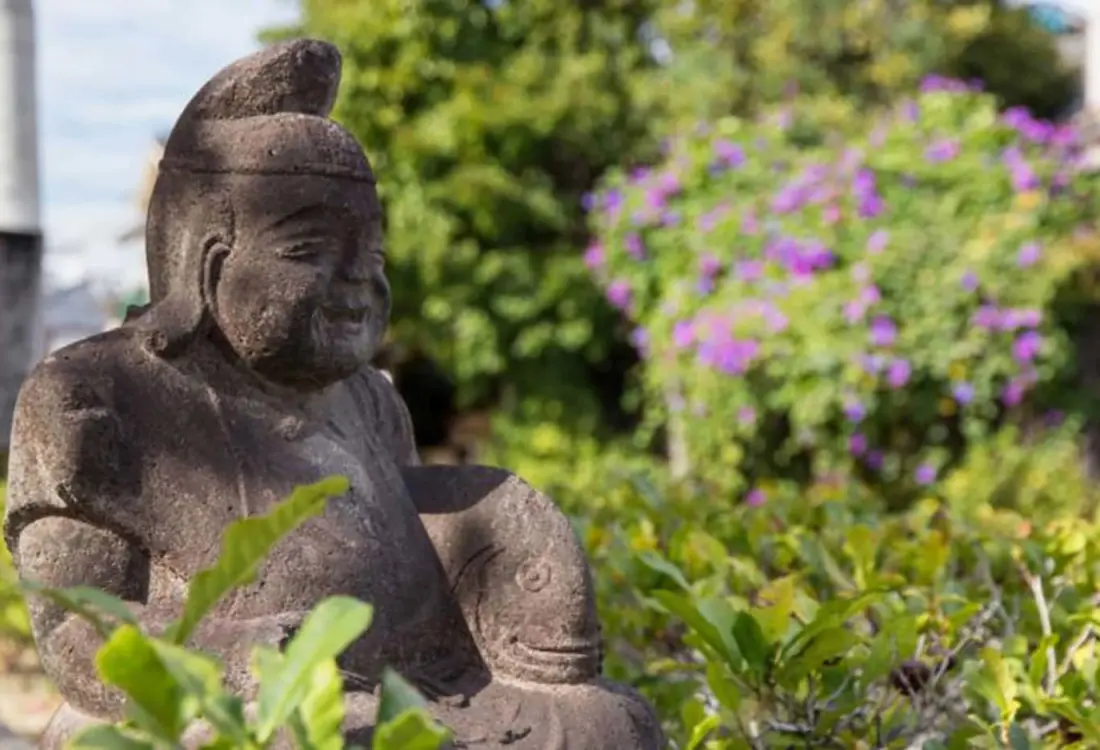
Exploring Saga City
and the Sake Street
The streets of Saga Prefecture's capital city are perfect for pleasant walks, and they serve as the backdrop to one of Saga's unique features.
The City of Ebisu
Ebisu is one of the Seven Lucky Gods and he represents prosperity and wealth in business. The inhabitants of Saga are particularly fond of this god. There are about 800 statues of Ebisu scattered around Saga, making it the place with the largest number of Ebisu statues in Japan.

Start your stroll around the city from the Saga Ebisu Shrine. Located in the grounds of Yuka Shrine, its small hall features statues of Ebisu instead of the usual guardian lion-dogs. The friendly priest here is happy to share stories about the city and its favorite god.

Not far from the shrine are the ruins of Saga Castle. Here is a history museum that is a reconstruction of the castle's main keep from the Edo Period (1603-1868).

There are three hearts hidden among the castle's Shachi-no-mon gate. A stone one, a bronze one and a big ivy one. Find the hidden love while breathing the air from the past!

The streets between the castle and the train station are picturesque and filled with Ebisu statues. The statues are usually set outside of shops and businesses. You can stop by the Kaiun Saga Ebisu Station and pick up a map of all the statues, along with instructions on how to pray to Ebisu.

For a little break, stop at Hizen Tsusentei, which also features a statue of Ebisu at the front. In this peaceful tea house, you will be able to experience the sencha ceremony. Using tea from the nearby city of Ureshino and traditional Arita porcelain, learn the practice of pouring three cups of the same tea and enjoying its changing flavor.

The hospitality of Hizen Tsusentei will make you feel like time has stopped and all that matters in the world is that you enjoy your cup of tea.
Follow the Sake Tradition
Saga Prefecture is known for the production of sake. To try some of its best brands, head to Kashima City's Sakagura dori (sake breweries street) in southern Saga. Once thriving with merchants' houses, sake breweries and other shops, this area is now dotted with preserved historic buildings.

Many of the sake breweries are still here and they are open to the public with shops and sake tastings.

There are also several remains of old samurai residences that can be visited.

The remaining breweries are collaborating with local farmers and businesses to promote local products and keep traditions alive. Minematsu Brewery offers a sake tasting set with snacks made with local ingredients.

You don't need a guide to discover Sakagura dori. There are informative plaques scattered throughout the street and shop owners are always happy to strike a conversation. Walk along the street of sake and let each building tell you a story.
Saga City is one of those places that you immediately grow affectioned to. Peaceful, with pretty streets and smiling people, the entire city seems to shine with a warm light of its own.

Laura is a Tokyo-based freelance writer, photographer and translator from northern Italy. She has a passion for craft beer, Japanese traditional instruments and discovering places that are off the beaten path.
Share this Page

- Travel Blogs
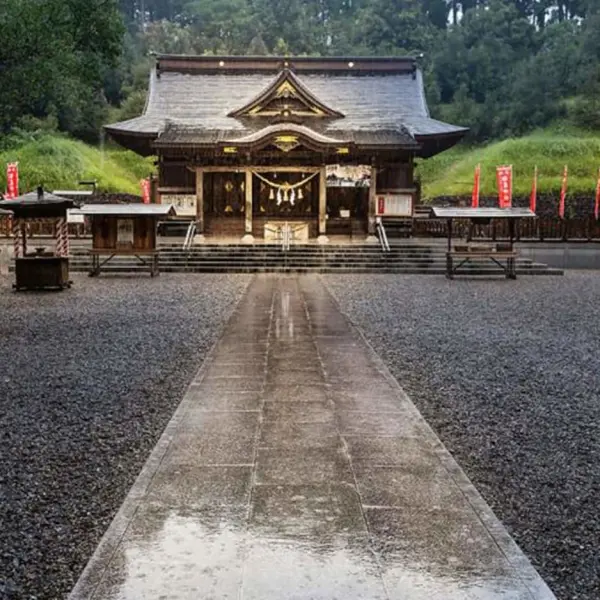
Related See & Do

- Exploring Saga City and the Sake Street
Kashima City Official Travel Guide
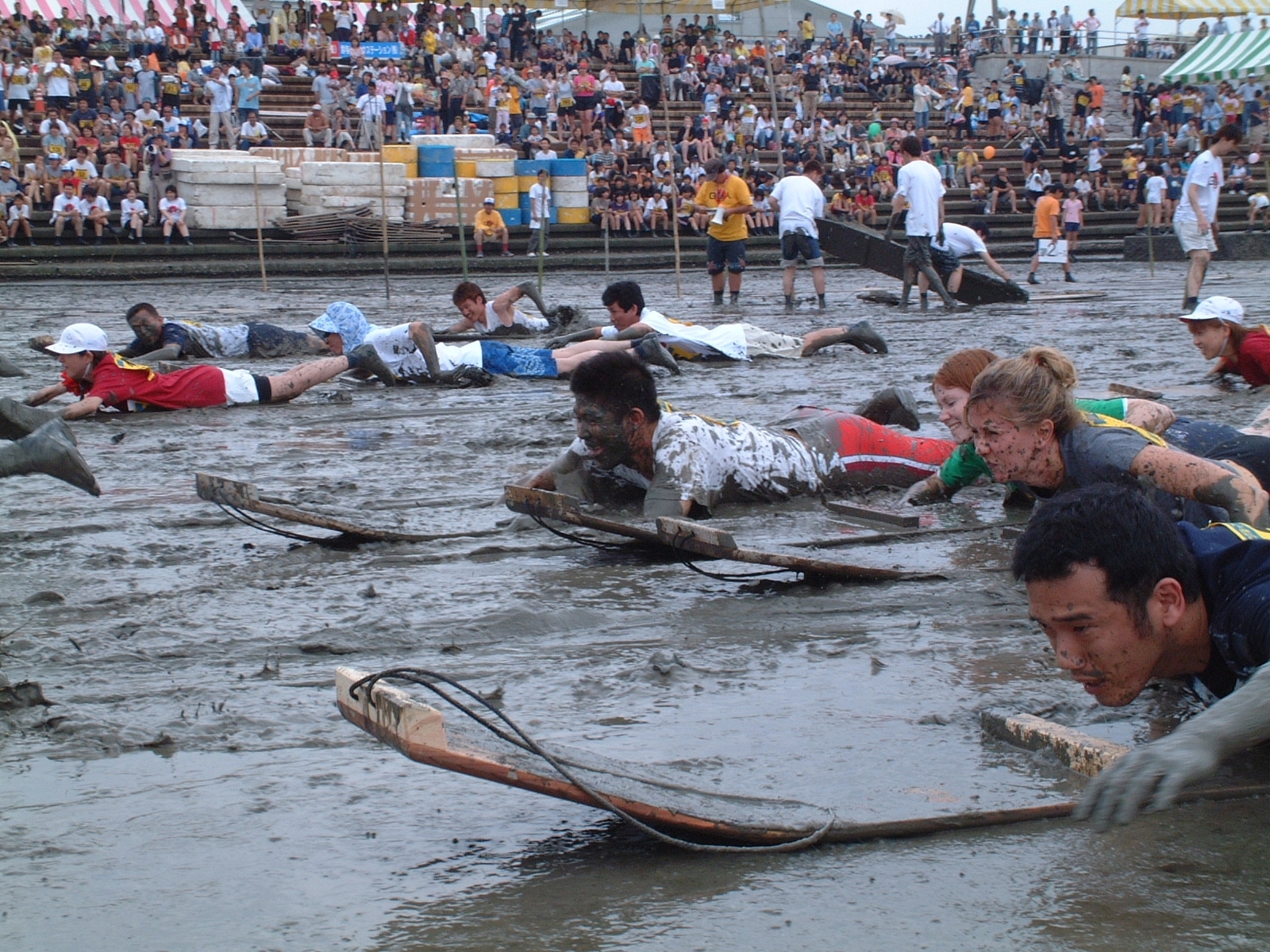
Kashima Gatalympics
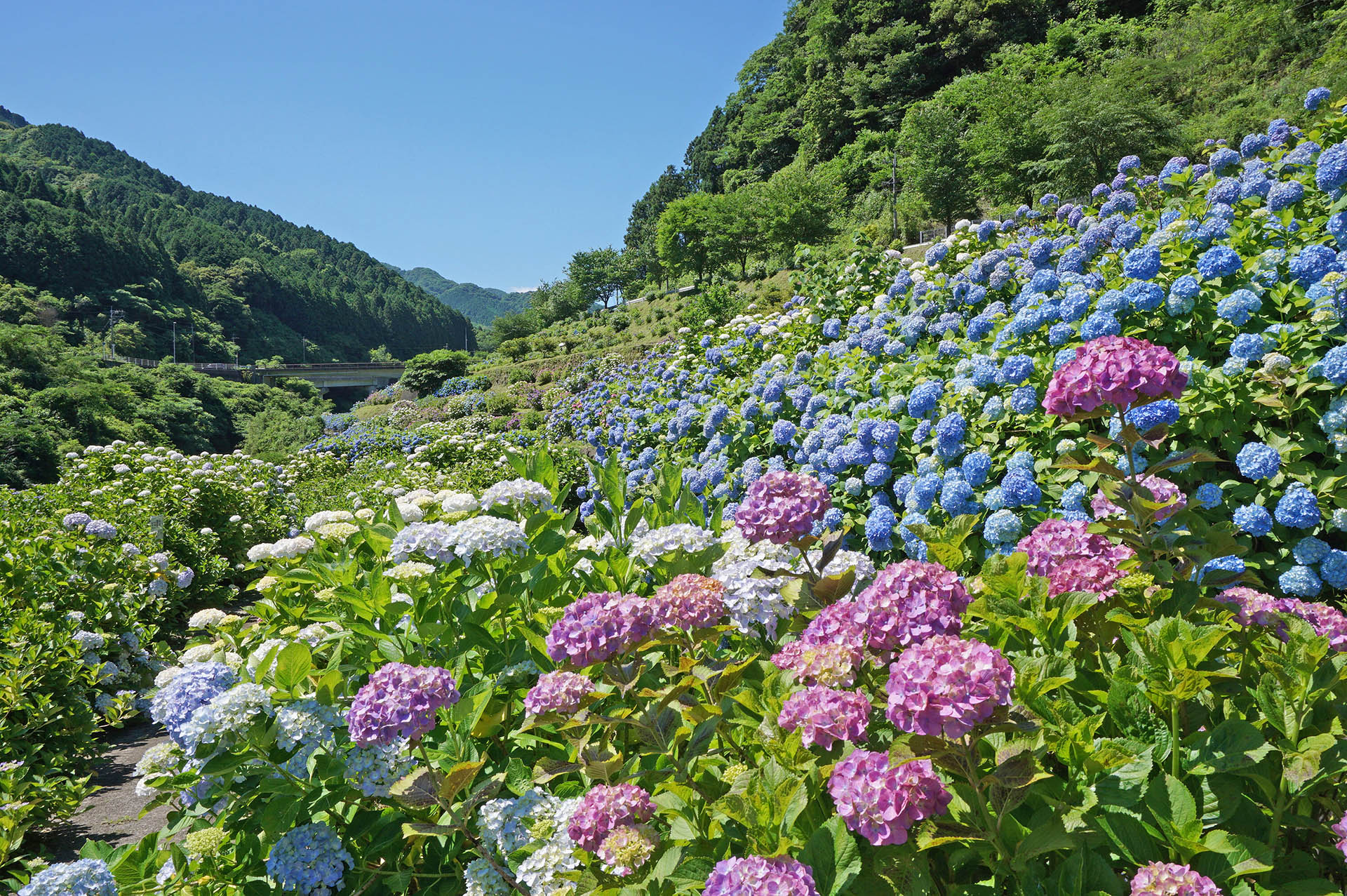
Nakakoba Dam Hydrangea Festival
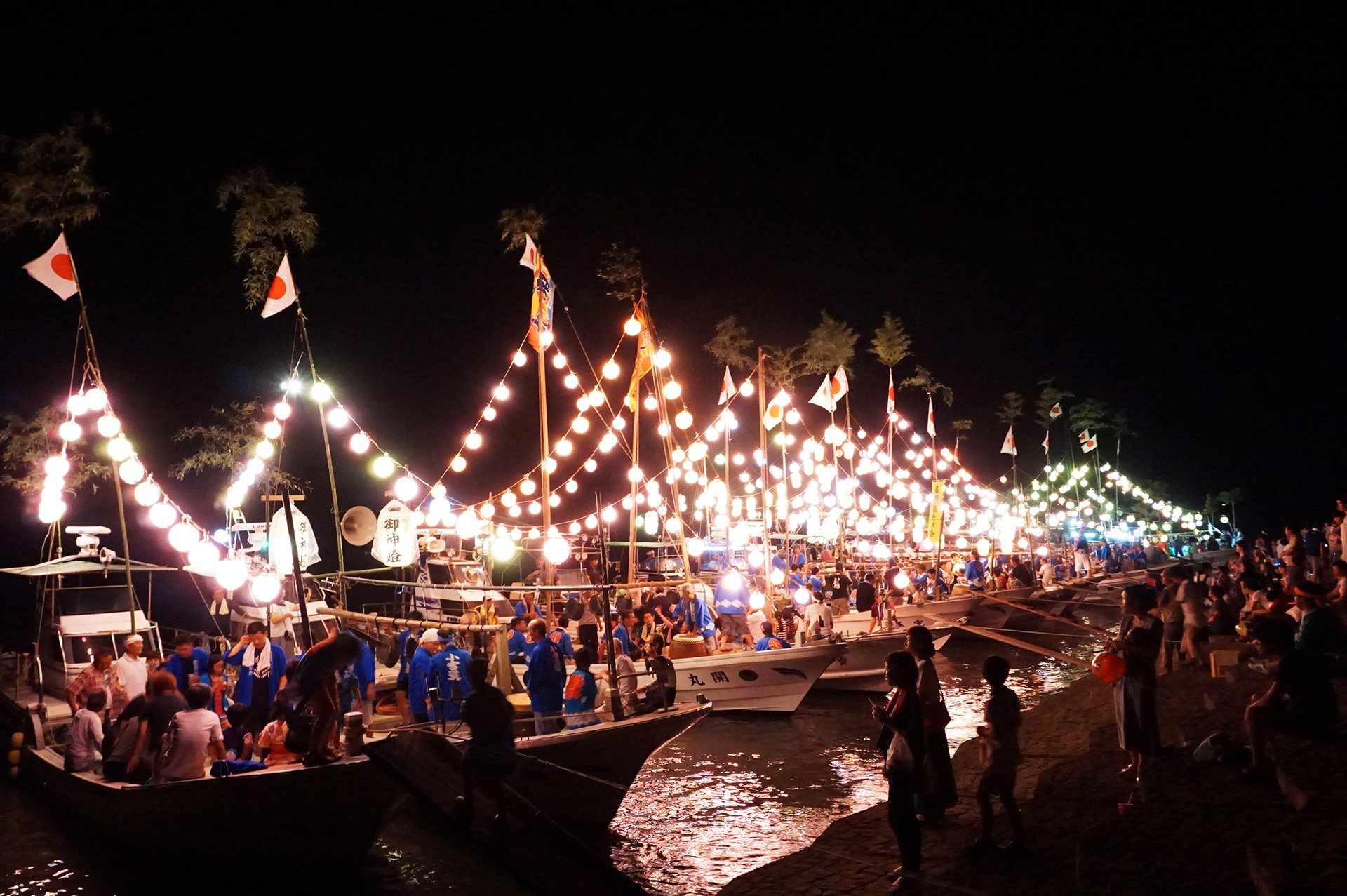
Okinoshima Mairi
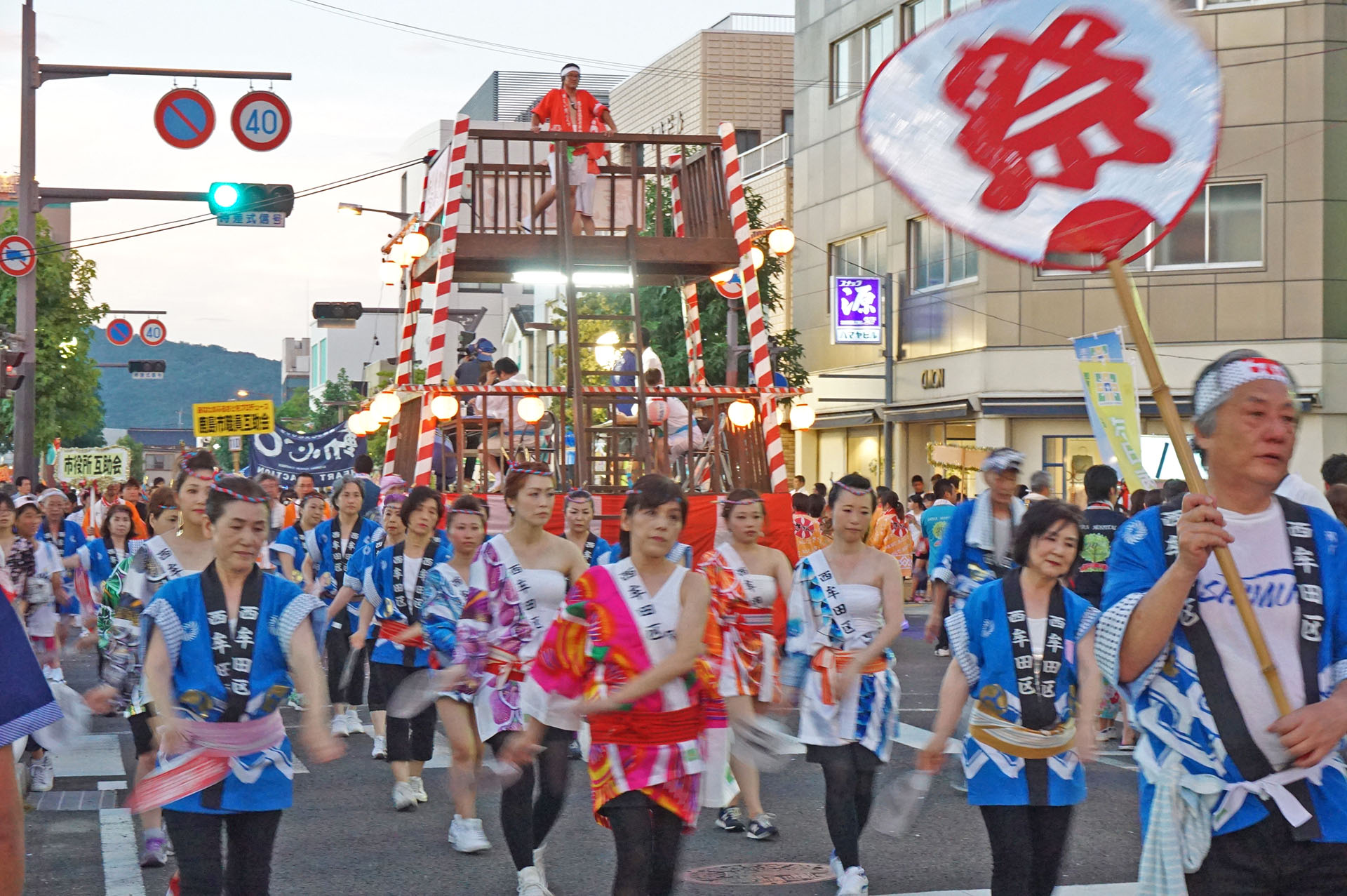
Kashima Odori
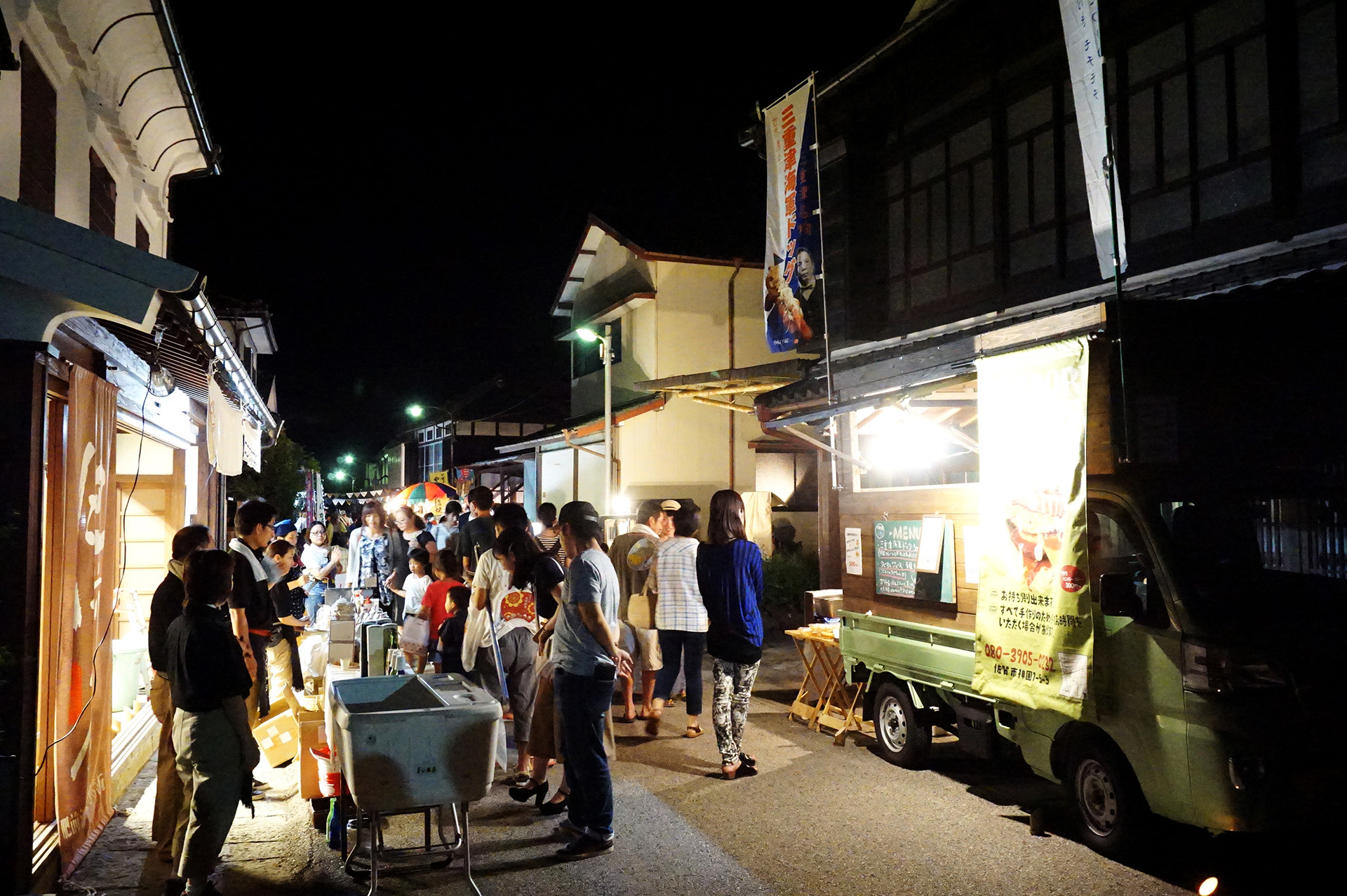
Hizen Hamashuku Saturday Night Market
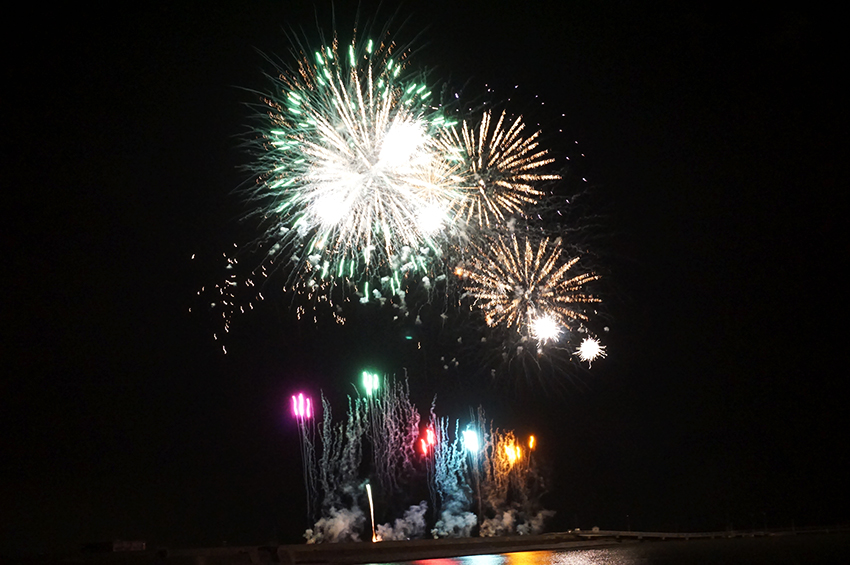
Kashima Summer Fireworks Festival
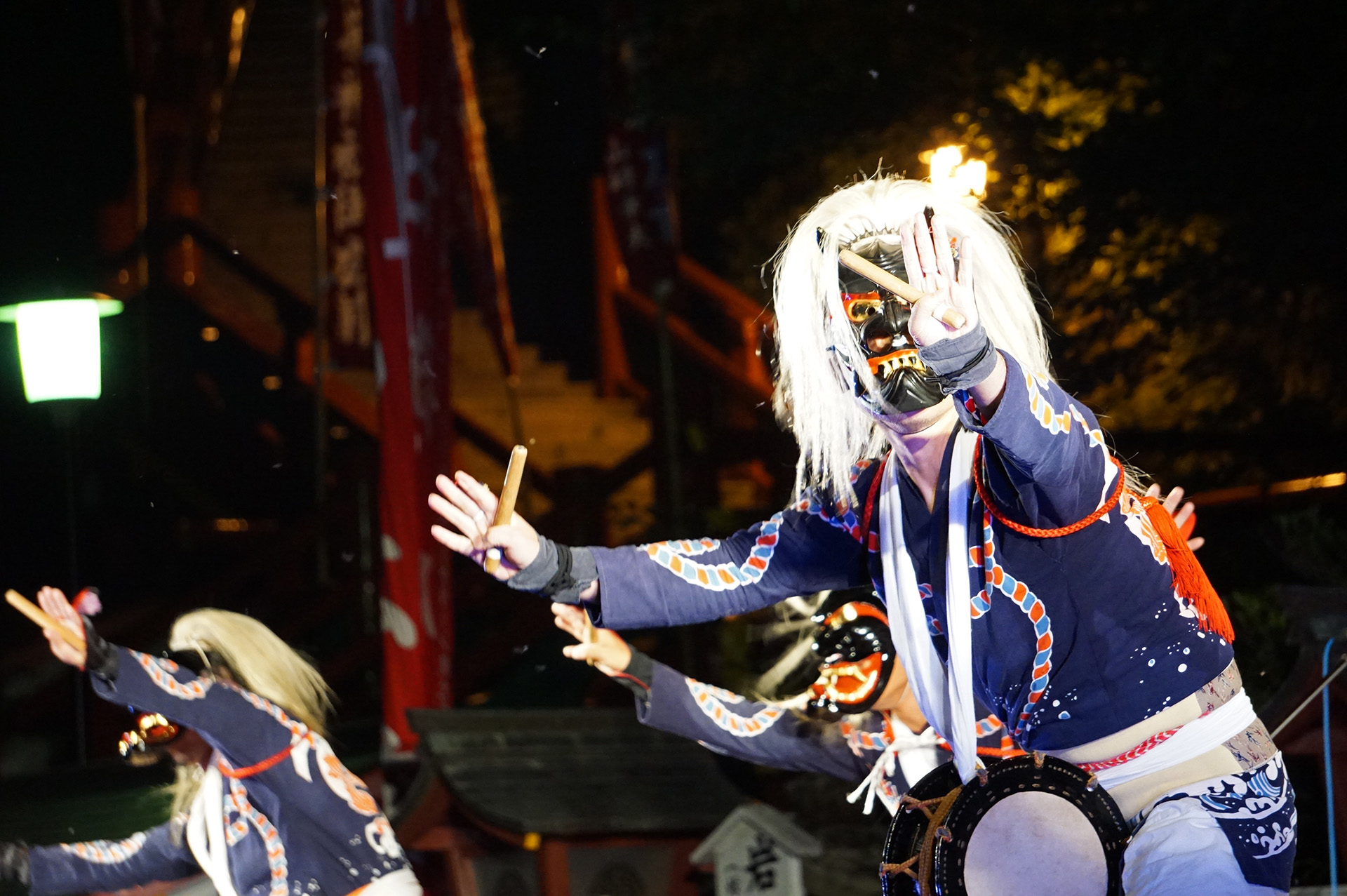
Kashima Traditional Performing Arts Festival
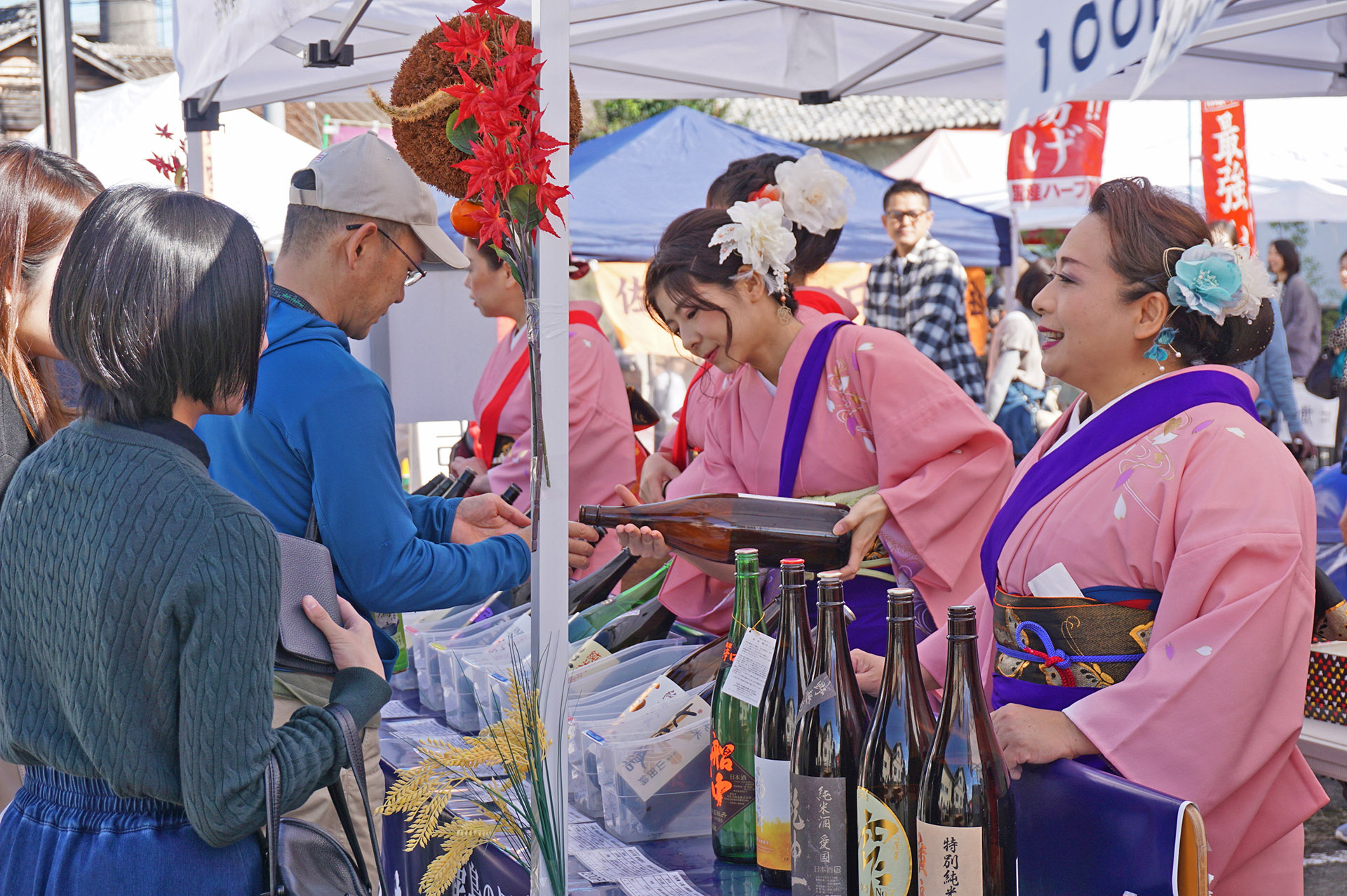
Hizen Hamashuku Autumn Sake Festival
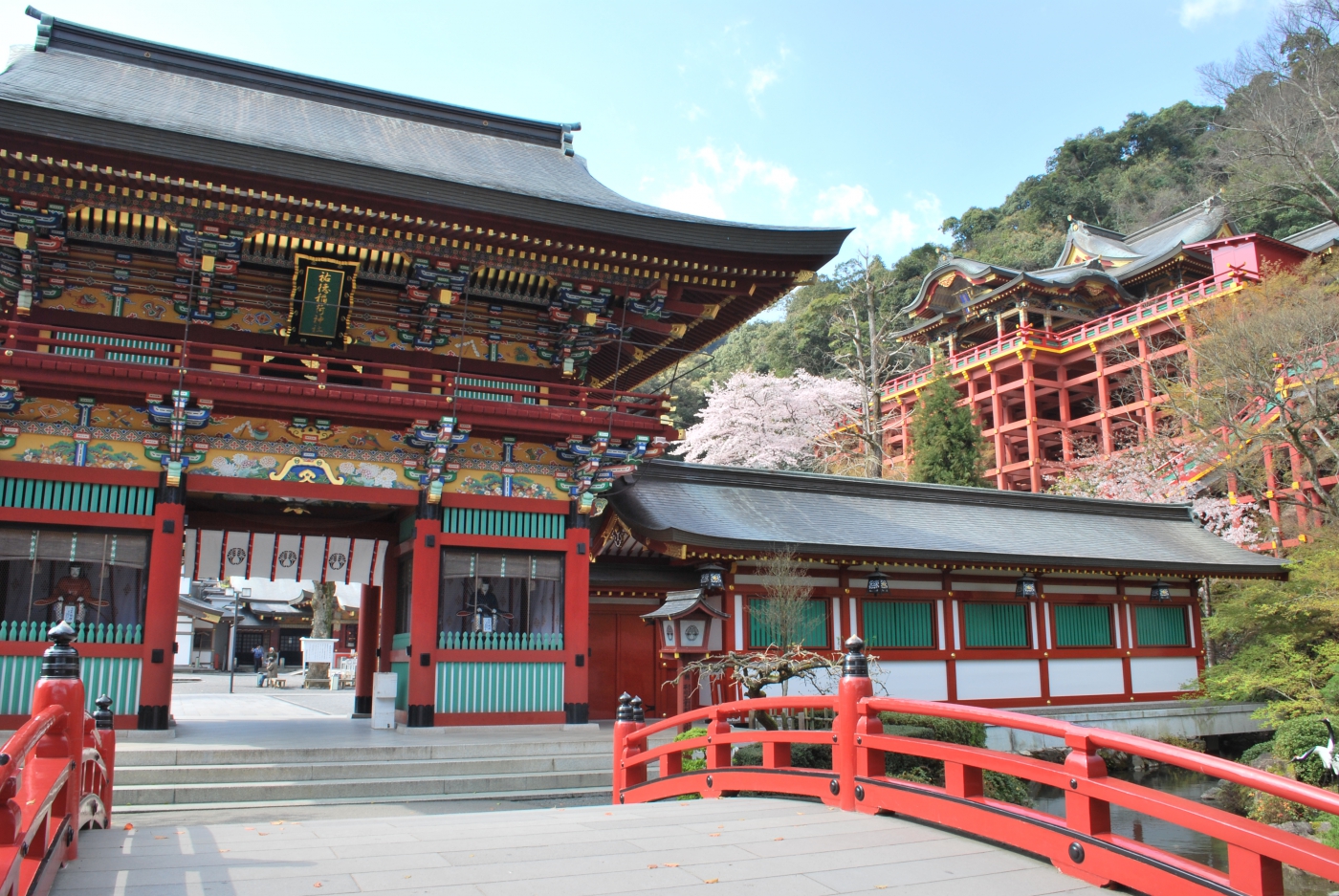
Saga Prefecture
- Published on : 25/02/2015
- by : Japan Experience
- Add to favorites
Japan Regional Guide: Saga Prefecture
Japan's Regions: Saga 佐賀県
Saga attractions, saga festivals, saga history.
Saga Prefecture is located in the north west of Kyushu and is the island's smallest prefecture. Saga borders Fukuoka and Nagasaki prefectures.
Saga is a mainly rural prefecture with strong connections with the sea and onwards to Asia. Saga's two largest towns are Saga and Karatsu, which are small municipalities by Japanese standards.
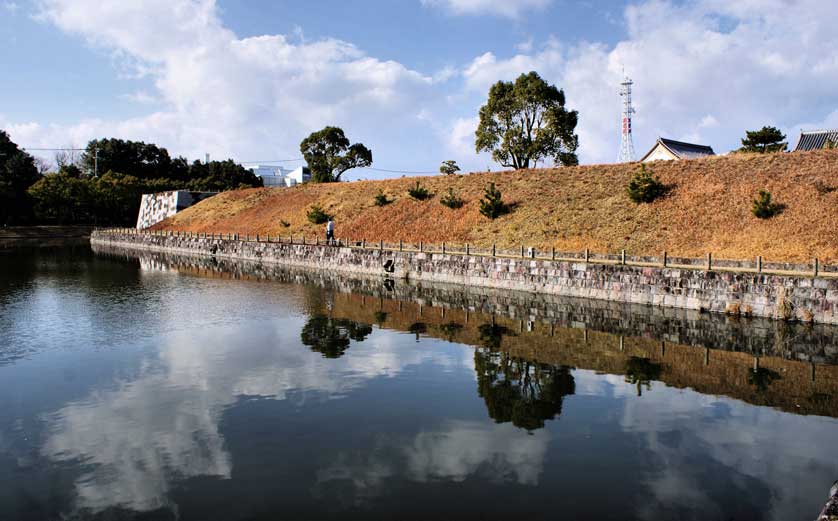
Saga Castle and its moat, in Saga Prefecture, Kyushu
Around 39% of the total area of Saga Prefecture is designated as arable land which is twice the national average. 11% of the prefecture is also preserved and protected land including the Genkai Quasi-National Park as well as the Hachimandake, Kawakami-Kinryu, Kurokamiyama, Sefuri-Kitayama, Taradake and Tenzan Prefectural Natural Parks.
One spectacular feature of the Saga countryside is its numerous terraced rice fields, some of which are distinctive enough to have names and attract admirers. The Rice Terraces of Hamanoura are famous as a collection of almost 300 terraces that are a striking sight when flooded in May.
Saga's main urban areas include the prefectural capital Saga city with a population of around 240,000 (2015 estimate), Karatsu and the smaller towns of Imari, Kanzaki, Kashima, Ogi, Takeo, Taku, Tosu and Ureshino.
Saga has a weather pattern similar to other areas in Kyushu including very hot and humid summers with milder winters than further east on the main Japanese island of Honshu. Plum and cherry trees will blossom here slightly earlier than in Honshu.
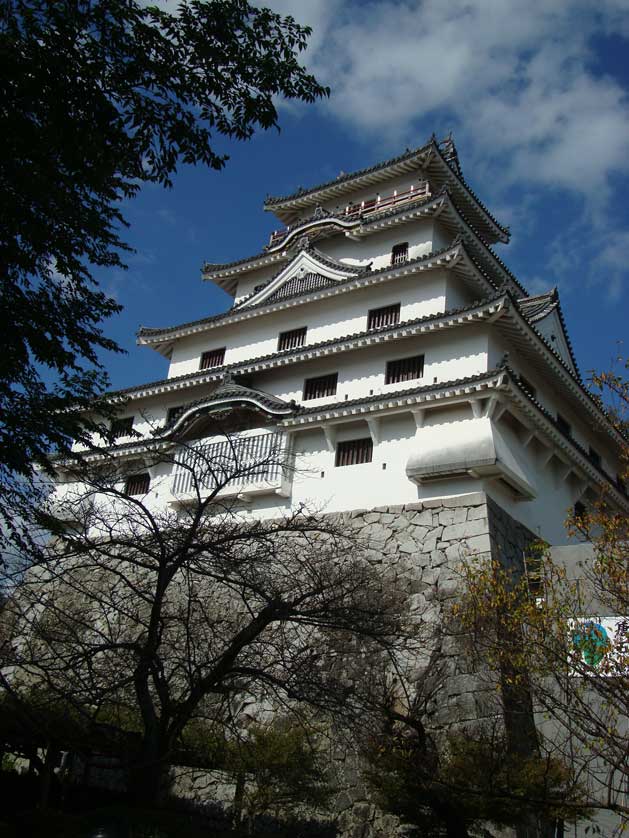
The present Karatsu Castle dates from 1966 and was constructed in the style of the original Edo Period castle
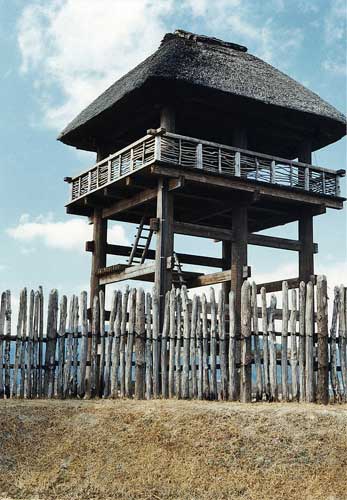
Yayoi Period reconstruction at Yoshinogari, Saga Prefecture
Saga Prefecture is a small prefecture but still has much to see and do. Fans of historic Japanese castles can enjoy both Karatsu Castle and Saga Castle , though both are modern reconstructions.
Kashima City in the south of Saga Prefecture is home to one of Japan's most famous inari shrines, Yutoku Inari Shrine (祐徳稲荷神社). Yutoku Inari Shrine features imposing, vermilion torii gates dramatically positioned at various angle on a hillside which visitors climb to reach the shrine building at the summit and enjoy the view of Kashima City and the Ariake Sea.
Saga is famous for the production of ceramics and porcelain including world famous Imari and Arita ware. Visitors are advised to visit the charming Okawachiyama kilns in the backblocks of Imari City where the ceramic industry was started by potters brought over from Korea by the invading armies of Toyotomi Hideyoshi in the late 16th century.
Ureshino in south-western Saga is a historical spa town with numerous famous onsen hot springs, renowned for their particularly (supposed) beneficial beautifying effect on the skin. Tofu boiled in the hot spring water is a local delicacy. Ureshino is also known for its high quality green tea. Hizen Yumekaido (9am-5pm, 365 days a year, 1,600 yen for adults, 1,000 yen for school age, 500 yen for infants) is a historical recreation that reflects Ureshino's past as a bustling post town on the Nagasaki Kaido between Okura and Nagasaki in the Edo period .
Yoshinogari Historical Park is an archeological site in the Saga countryside from the prehistoric Yayoi period (300 BC to 300 AD). See first-hand how Japanese people lived about two millenia ago, in a moat-encircled village of pit dwellings, with store houses on stilts, and hundreds of graves from the era. The park has its own station of the same name: Yoshinogarikoen.
The Saga Prefecture Space Science Center , in Takeo City, is a space exploration themed attraction suitably futuristic looking in design.
The Tenzan Ski Resort in Saga City is an artificial snow ski and snowboard slope that provides snow slopes from mid-November to early-April (some natural snow during the coldest weeks), and grass slopes for grass skiing and mountain biking and boarding in the warmer months. Has a swimming pool and golf facilities.
Saga prefecture has numerous golf courses throughout.
The Iroha Islands Lookout Point in Karatsu looks out over the numerous tiny islands of Imari Bay. Their most famous admirer was the 8th-century calligrapher and monk, Kukai (AKA Kobo Daishi) who wrote of being overwhelmed by their beauty. "Iroha" is the Japanese equivalent of "ABC," signifying the multitudinousness of the islands.
Also in Karatsu are the Nanatsugama Caves : seven massive coastal caves on the Genkai Sea, accessible by tour ferry.
Saga boasts several famous festivals, the most internatlonally famous being the Saga International Balloon Fiesta , a hot air balloon event on a huge scale which takes place in Saga City at the start of November.
The Arita Ceramic Fair is a twice-yearly event held in spring (end of April/early May) and fall (late November). The town of Arita where the Fair is held is home to one of Japan's most renowned styles of eponymous pottery.
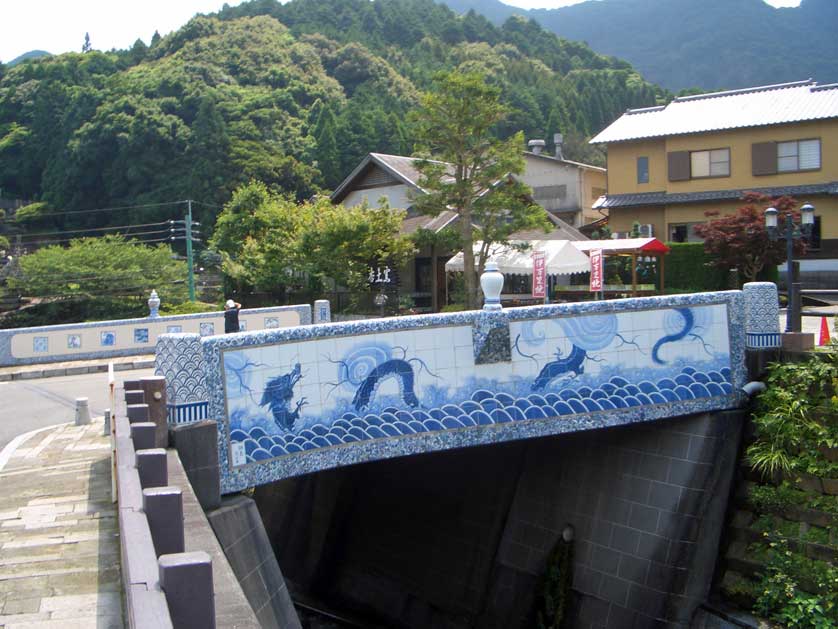
Okawachiyama Bridge, Saga Prefecture
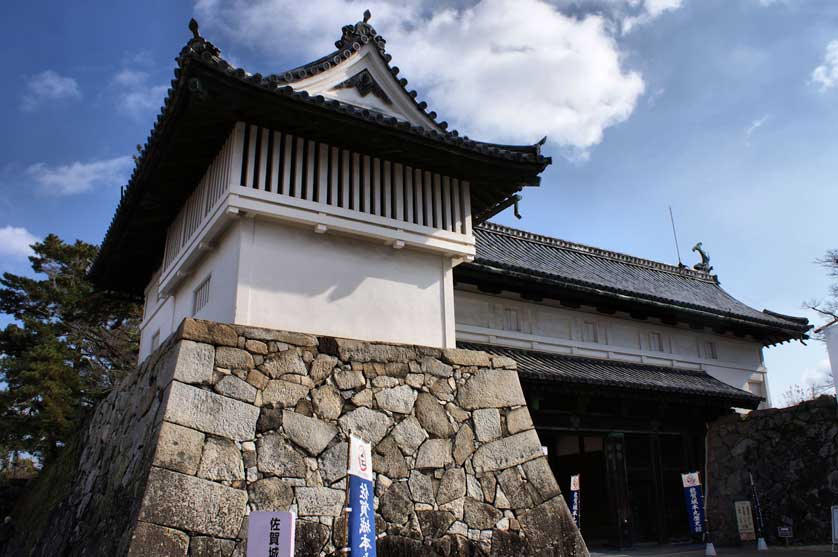
Saga Castle in Saga city, Saga Prefecture
Saga, like many other prefectures in Japan has various sites that date back to the Jomon and Yayoi periods including the large and important Yoshinogari site which includes numerous dwellings, a cemetery, and walled wooden precincts.
During the Edo Period Saga domain was divided in to various sub-domains: Hasunoike, Kashima and Ogi. The former Karatsu domain centered on Karatsu Castle on the coast is also now part of modern Saga Prefecture. Hizen domain was also split between what is now Nagasaki and Saga and was centered on Saga Castle.
The Saga Rebellion of 1874 occurred during the early Meiji Period (1868-1911) and was led by Eto Shimpei (1834-1874) and Shima Yoshitake (1822-1874), previously high ranking samurai from Hizen Province.
The revolt was intrinsically a conservative reaction to the loss of samurai privileges, Japan's increasing westernization and the new Meiji government's refusal to sanction an invasion of Korea. The uprising was easily put down by government forces under Okubo Toshimichi and both Eto and Shima were beheaded but the seeds of unrest in Kyushu were to take roots in the far more serious Satsuma Rebellion led by Saigo Takamori in 1877.
Ariake Saga Airport is a small local airport with a few flights to both Haneda and Narita airports in Tokyo. International destinations include Seoul (Incheon) and Pudong ( Shanghai ).
Shin-Tosu Station is a stop on the Kyushu Shinkansen from Hakata to Kagoshima Chuo .
Book Hotel Accommodation in Saga Prefecture
Books on Japan
Latest Articles
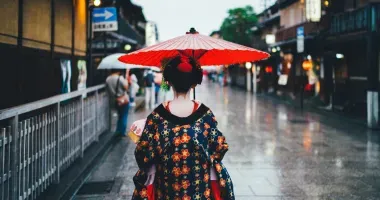
What to do during the rainy season?
Japan, with its well-defined seasons, has a special period called tsuyu or rainy season , which generally runs from early June to mid-July

The sika deer : A fascinating species native to East Asia
The sika deer (Cervus nippon) is a captivating species native to much of East Asia, including Japan, Taiwan, eastern China, Korea, and parts of Russia.
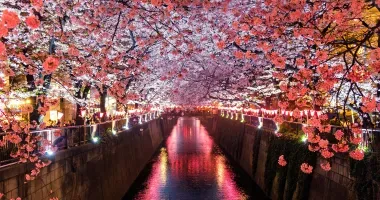
Where to admire the cherry blossoms in spring
Japan is renowned for its distinct and beautiful seasons. One of the most eagerly awaited is undoubtedly spring, with the blossoming of the sakura cherry trees.
All the themes of the city

Japanese Food and Drink

Japanese Movies

Japanese Language

Japanese History

Understanding Japan

Before you Travel
Please select your country on the list below:
- Switzerland
- United Kingdom
- Other countries
Top Things to Do in Saga - Saga Must-See Attractions
Things to do in saga, explore popular experiences, tours near saga.

Private Fukuoka Tour with a Local, Highlights & Hidden Gems 100% Personalised

In Fukuoka! Guide to an izakaya only 100% locals know/Bar Hopping

One-Day Customized Minami-Aso & Takachiho Tour

Fukuoka Full-Day Private Tour with Government Licensed Guide

Fukuoka One Day Tour with a Local: 100% Personalized & Private

Fukuoka Cycling [Bike is Life] Fukuoka "Hakata" Ride

Day trip from central Fukuoka.Rental cycle in Shikanoshima island

Kyushu Beppu Suginoi Onsen Tour

Half-Day Guided Yanagawa River Cruise and Grilled Eel Lunch

1-Day Hakata Walking Tour
Top attractions in saga.

Other Top Attractions around Saga

What travellers are saying
Saga City - Saga Prefecture
July 23, 2016 - saga city - saga prefecture.
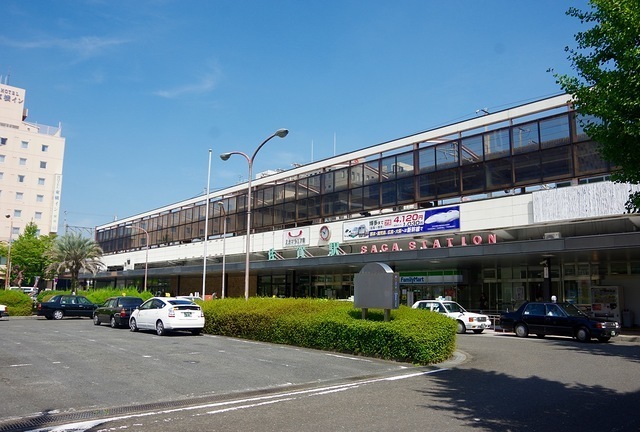
When you normally visit the prefectural capital it's normally a hive of commerce and activity. That is - unless you come to Saga where it's more like a small friendly town. For today - I visited some of the main sites of Saga which I'm happy to say in general significantly bet my expectations.
The locations visited in Saga City in order include: (1) Old Kaga Bank (2) Old Ushijima Residence (3) Old Sansho Bank (4) Old Fukuda Residence (5) Saga Shrine (6) Chokokan Museum (7) Saga Prefectural Museum (8) Saga Castle Museum
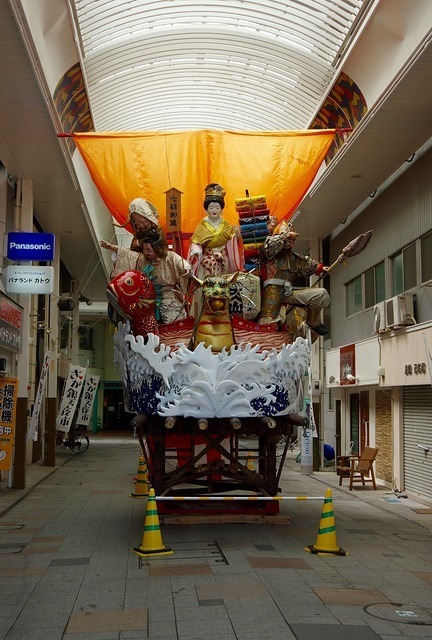
When you first visit Saga, I highly suggest you go to the Tourist Information Centre located at the station if you are arriving by train. It should also be noted that it is 2.5 - 3 km's to the castle so you might want to catch a bus or taxi. I decided to walk there and catch a taxi back due to the sheer heat.
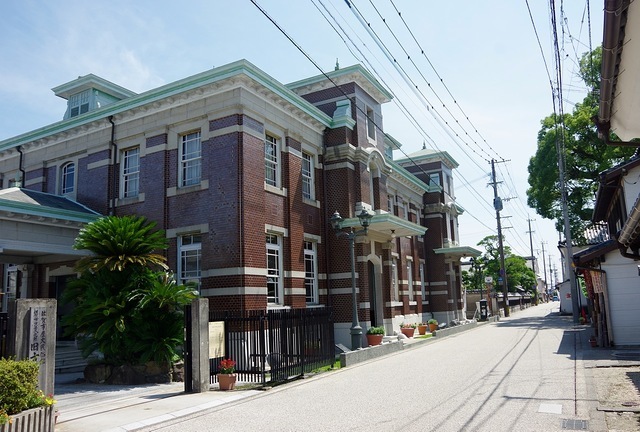
When I completed my research of Saga, I did not find much which people raved about apart from Yoshinogari Park. Something that I did not know was that the town had an old town which is around a 15 minute walk from the station. My first stop was the Old Kaga Bank which is also known as the culture museum.
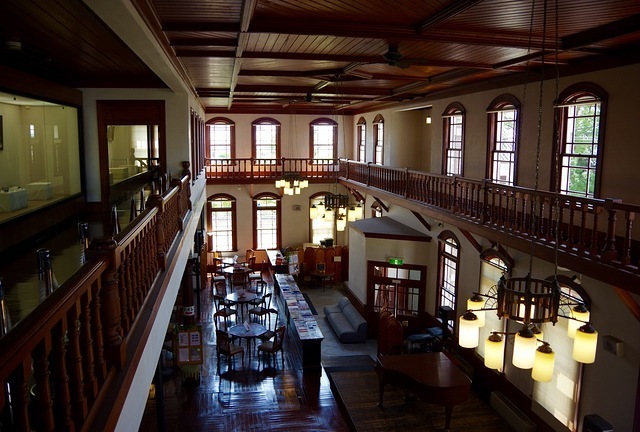
My second stop was the Old Ushijima Residence which was just across the street. Note that all of these residences are free and have some english, Korean and Chinese translations close to the door.
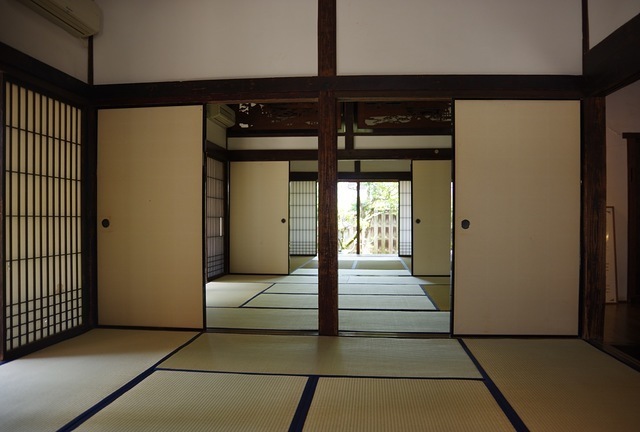
Just a little bit further down the road is the Old Sansho Bank which was quite nice. It also showed the living quarters at the rear and upper sections of the residence.
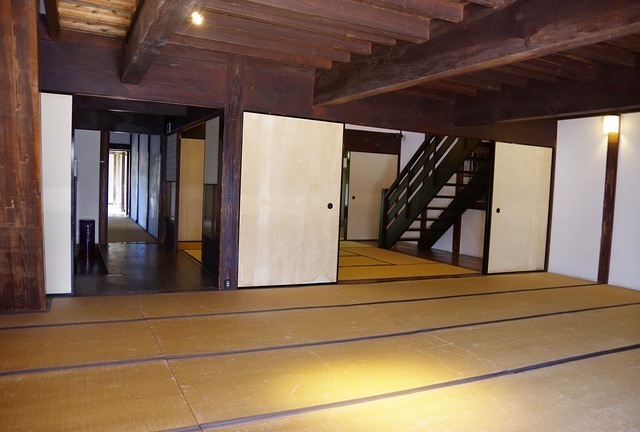
Probably the nicest residence of the ones I visited (there are more!) was the Old Fukuda Residence which is just a few streets away. There is lots of old stuff here along with a pretty garden that looks onto a large tatami room. There was also two old ladies making some type of material using traditional methods which may be of interest to some people. My photos do not do this place justice.
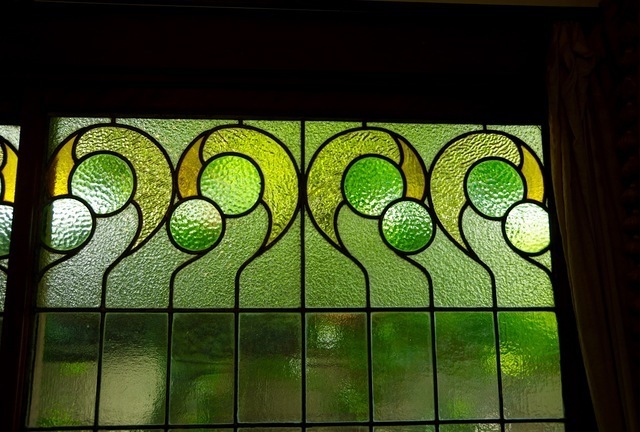
Quite often I visit the main shrine or jinja of a town. My normal reaction is "oh - another shrine" but the Saga shrine was a bit better than normal. I guess it's because it's intricately detailed and you can get really close up which is not the norm.
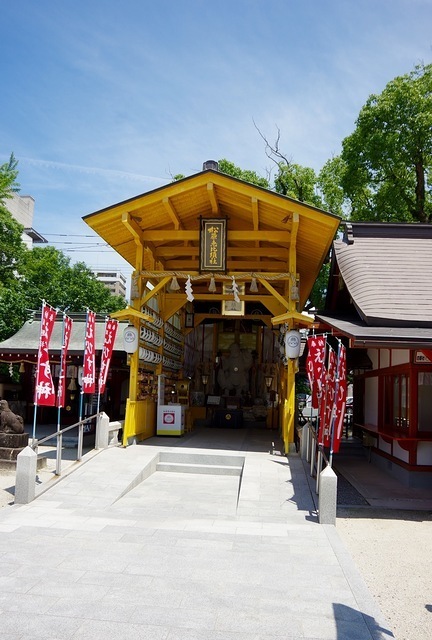
The most disappointing attraction today was also the only paid attraction - the art deco Chokokan Museum. It costs 300 yen to enter and included a small exhibition that actually closed today! (July 23rd 2016). If you want to know what art deco things I saw 2 weeks ago in Spain - this gives you a taste..... https://feddersphotos.smugmug.com/Best-of-Western-Europe/Spain/
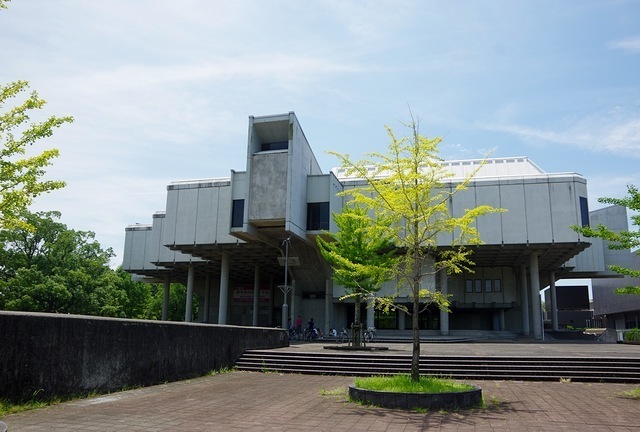
Located a 5 minute walk away and directly opposite the castle museum is the Saga Prefectural Museum. It is also home to the Art Museum which was currently in between exhibitions.
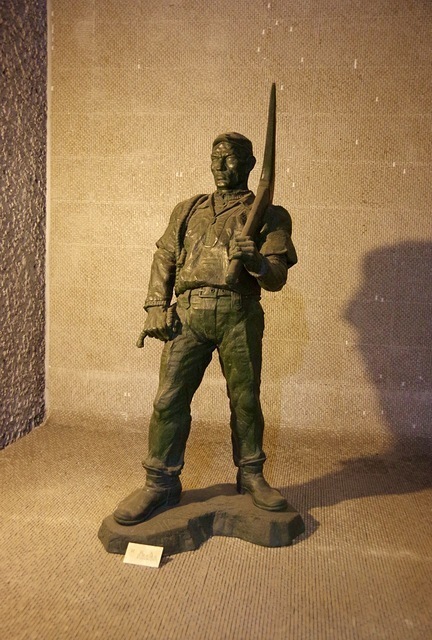
There was almost no english signage and the exhibitions were mediocre at best - but they did have a fantastic cafe which had three times the patronage of both museums when I visited.
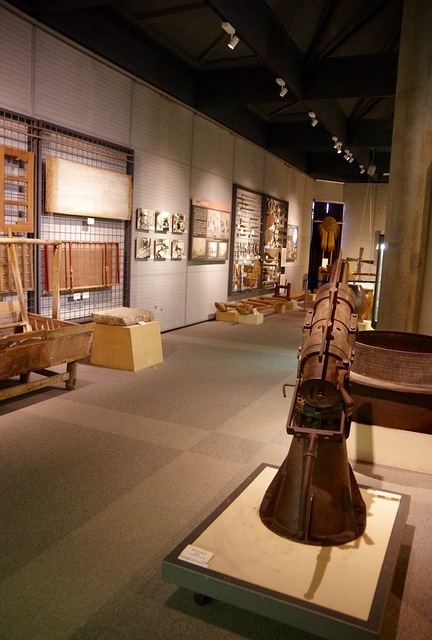
I don't normally show swords, but this one is from the 13th century!!
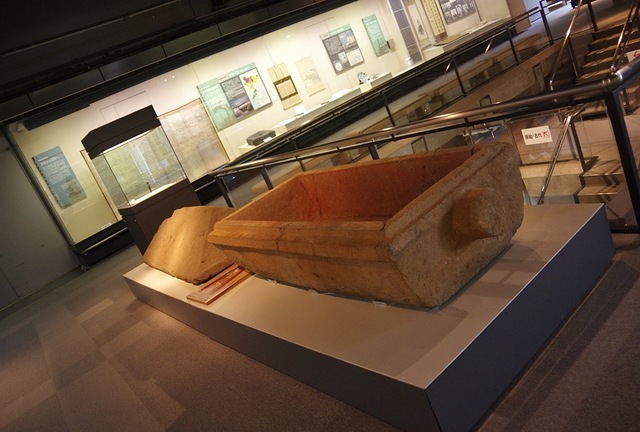
The Saga Castle Museum which is free to enter is quite an impressive recreated building which is one of the rare castles in Japan which is surrounded by a wall instead of being built on a wall. As I've visited way too many castles - this is something that I know about!
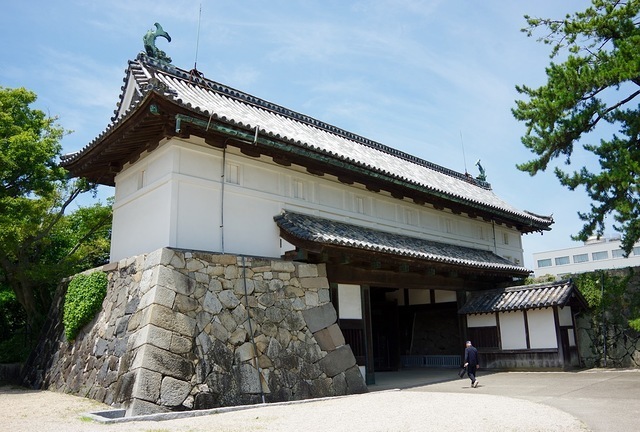
The museum itself is rather large and has both good english translations everywhere along with a very detailed audio guide in several languages. As normal - there is no photography inside and the samurai outfit exhibition is quite interesting.
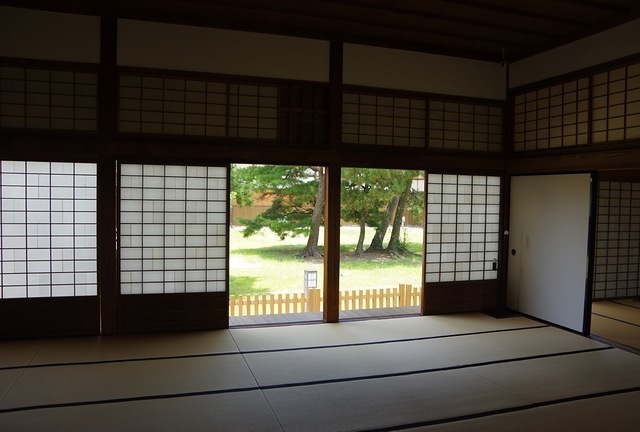
Even though I have seen quite a lot of Saga City, I decided to wave a white flag due to the sheer heat in the middle of the day. There are still plenty of museums, parks and old residences to visit but they will have to wait for another visit. As such - I moved onto Yoshinogari Park later in the day which will be my next post. Further information: Saga Tourism: https://www.city.saga.lg.jp/main/3.html (translated Japanese)

- Tours & Experiences
- Tailor-made Trips
- Bahasa Indonesia
We are happy to see you again!
Continue with
Or use email.
No Account? Create one
Create account
Already have an account? Sign in
Quickly Sign up with
I agree to Japan Travel's Terms of Service and Privacy Policy . Terms of--> and acknowledge that Japan Travel's Privacy--> applies to me.-->
Email reset password link
Please check your inbox and click the link we will send to you.
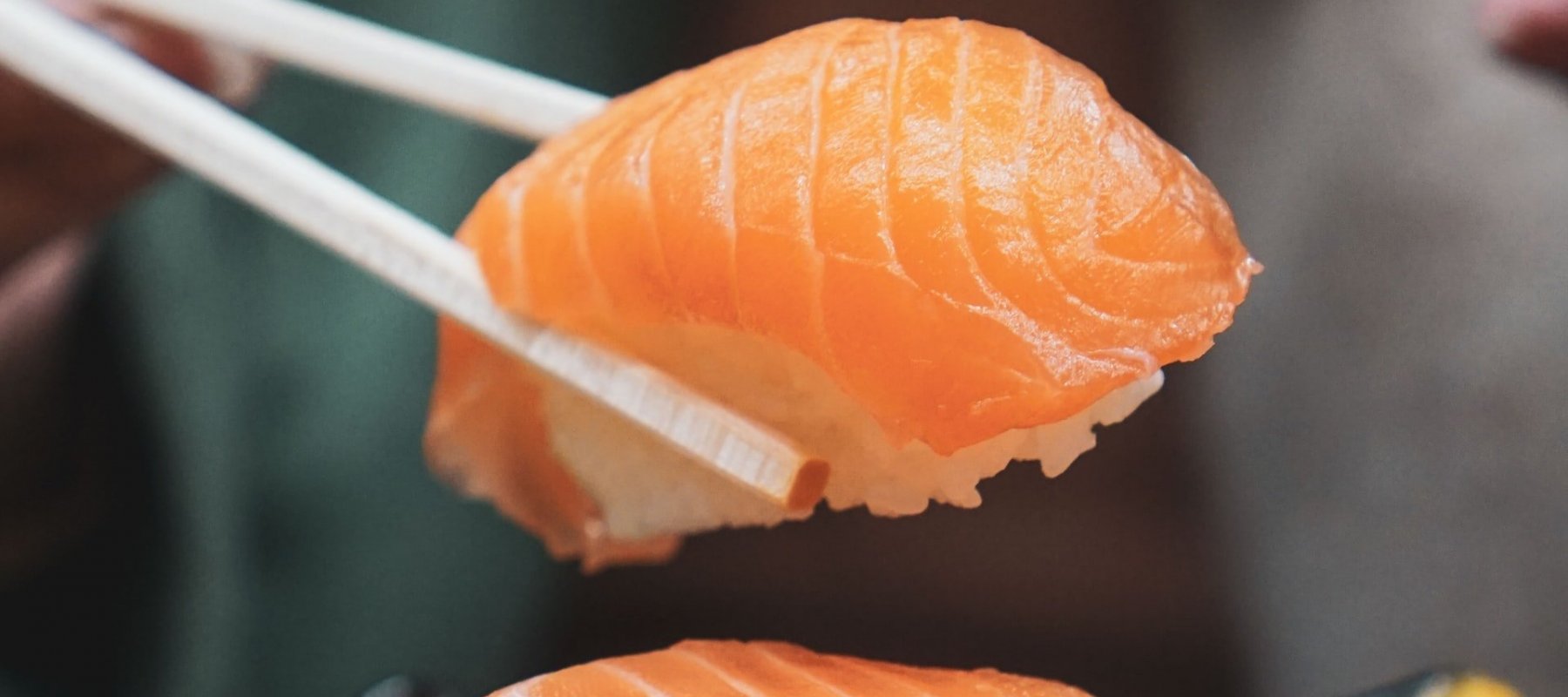
Food in Saga City, Saga
Search filters, food top 10.
- Recommended

Hagi City Food Guide: Best Local Eats

veJin: Vegan Ramen

Four Seasons Steak House

Tokyo Takes 2nd Place on Top Coffee Cities List

Okinawa Goat Misaki

SpongeBob Cafe “CAFE Secret Recipe” is Opening for a Limited Time in Shibuya

Shu'n Wine and Dine Swissotel Namba

Only in Japan: Character Cafes in Tokyo

Cafe Gallery Doka Doka in Onna

Foodies Guide to Authentic Japanese Cuisine
Let us know how we can help.
Triotech celebrates launch of Puy du Fou’s SAGA City of Light experience
Words: Rebecca Hardy
| 2 min read
Triotech, an award-winning creator of media-based attractions , is celebrating the launch of the eagerly awaited SAGA City of Light experience, which opened yesterday (28 May) in Shanghai, China.
This groundbreaking project is Puy du Fou’s first entry into the Chinese market and showcases the innovative partnership between Triotech’s cutting-edge technology and Puy du Fou’s captivating storytelling.
Dynamic platforms
The SAGA City of Light immersive show features seven dynamic platforms designed and built by Triotech. The platforms emulate life-size trains and other vehicles, and transport guests back to the 1930s to explore historical Shanghai. Covering an expansive 40,000 square metres with 26 possible routes, the experience will take visitors on an unforgettable two-hour journey through time.
Joseph Corbo Courtemanche, COO and executive producer of Puy du Fou Asia, says: “Triotech’s teams demonstrated great professionalism throughout the project. Their expertise in dynamic platforms is a valuable asset to the SAGA project. There is no doubt that visitors will appreciate the experience.”
Gabi Salabi , managing director projects, Triotech, comments: “We’re very proud to have contributed to this groundbreaking SAGA City of Light project. Working with Puy du Fou and its rich history has been a remarkable journey, we look forward to continuing this special partnership.”
Puy du Fou, which has operations in France, Spain, and now China, is recognised worldwide for its immersive historical theme parks and spectacular shows.
Attendees at IAAPA Expo Asia can meet representatives from Triotech at booth 737. The expo is taking place at the Queen Sirikit National Convention Center in Bangkok, Thailand until 30 May.
Earlier this month, Triotech announced that its new interactive dark ride, Into The Deep , will be installed at Six Flags Qiddiya City in Saudi Arabia. The firm has been selected to design, engineer, manufacture and install the custom interactive dark ride for the new Qiddiya Investment Company theme park.
- Ride Systems
- Theme park rides
- Attractions technology
- Theme park suppliers
Want more articles like this for FREE?
Get the latest attractions industry news direct to your inbox, every day.
- Blooloop daily
- Blooloop weekly
Rebecca Hardy
More from this author, companies featured in this post, how is 2024 shaping up for north america's big theme park chains, crafting theme park experiences for every generation, is india ready for a new wave of entertainment, the top 10 roller coasters in the usa, universal comes to the uk: what could influence the ip we see at the new park, disneyland and disney world - when will the price be too much, enjoying this article, beckhoff automation collaborates with salzgeber to upgrade sound system at vienna state opera, thisplays shares insights into the changing landscape of photo booths, accesso creates app to help visitors explore acclaimed garden at powerscourt estate, small actions & strong leadership: the call for climate action in museums, related content, universal orlando to host first-ever 'premium scream night' for halloween, walt disney imagineering gives sneak peek inside tiana's bayou adventure, universal orlando to open preview centre for epic universe.
Your web browser is out of date. Update your browser for more security, speed and the best experience on this site.
‘Garfield,’ ‘If’ and ‘Furiosa’ lead another lousy box office weekend

- Show more sharing options
- Copy Link URL Copied!
It was a quiet weekend at North American movie theaters, dominated once again by Sony’s “The Garfield Movie,” “Paramount’s “If” and Warner Bros. “Furiosa: A Mad Max Saga.” Flipping the script from their Memorial weekend openings, the animated orange cat crept ahead of the wasteland warrior in their second outing.
The Garfield Movie ” earned a chart-topping $14 million in ticket sales while “If” slipped past “Furiosa” into second place, according to estimates from market research firm Comscore on Sunday.
“Garfield” fell only 42% in its second weekend in North America. It also topped the global box office — adding $27 million from international territories — bringing its running worldwide to $152.2 million. The animated pic featuring the voice of Chris Pratt will essentially have the market to itself until “Inside Out 2” arrives on June 14.

Column: Hollywood’s high-pressure expectations game has created a box office doom loop
How Hollywood’s absurdly high expectations — on big-budget franchises, familiar IP, opening weekend and more — led to the current box office crisis.
May 28, 2024
John Krasinski’s imaginary friends fantasy “If,” starring Ryan Reynolds and Cailey Fleming, earned $10.8 million in its third weekend and has now made over $80.4 million domestically.
“Furiosa,” meanwhile, fell 59% from its first weekend, adding $10.75 million from 3,864 locations in the U.S. and Canada. That puts its running domestic total at $49.7 million and its global sum at $114.4 million against a $168 million production budget.

Review: In ‘Young Woman and the Sea,’ a true story of perseverance gets the epic treatment
In 1926, Trudy Ederle was the first woman to swim across the English Channel, a feat that’s recounted as a sporting accomplishment and an early media phenomenon.
May 31, 2024
Disney/20th Century Studios’ “Kingdom of the Planet of the Apes ” landed in fourth place in its fourth weekend with $8.8 million. It has now made $140 million domestically and $337.1 million globally.
And the Ryan Gosling and Emily Blunt action-comedy “ The Fall Guy, ” which is available to purchase at home, rounded out the top five with $4.2 million, bringing its domestic total to $80.3 million. Globally, the Universal release has made $157.9 million.
There were several new releases that opened on over 1,000 screens this weekend: Sony/Crunchyroll’s anime “Haikyu!! The Dumpster Battle”; IFC’s horror “In a Violent Nature”; Roadside Attractions’ Diane Keaton-Alfre Woodard-Kathy Bates comedy “Summer Camp” ; and Bleecker Street’s father-son drama “Ezra.”
“Haikyu!! The Dumpster Battle,” based on the Japanese high school volleyball series, made an estimated $3.5 million from 1,119 locations. The slasher “In a Violent Nature” opened to $2.1 million from 1,426 locations (a massive release for IFC Films and Shudder). And, “Ezra,” about a stand-up comedian (Bobby Cannavale) and his autistic son, earned $1.2 million from 1,320 screens.
Disney also released the well-reviewed “Young Woman and the Sea,” starring Daisy Ridley as the first woman to swim the English Channel, but did not report its ticket sales. Likewise, Richard Linklater’s “ Hit Man ” is currently playing in select theaters around the country before it comes to streaming next week, but Netflix does not release box office numbers.
The 2024 box office is struggling compared with both last year (down 23.9%) and pre-pandemic standards (down 42.2% from 2019 and 46.4% from 2018), according to data from Comscore. On this weekend last year, “Spider-Man: Across the Spider-Verse” opened to $120.7 million while “The Little Mermaid” was still pulling in over $41.4 million in its second weekend. This year has yet to have any film open to more than $100 million domestically.
While “Barbie” and “Oppenheimer” had yet to storm theaters at this point last year, there had been several substantial hits including “The Super Mario Bros. Movie” ($1.36 billion global total), “Guardians of the Galaxy Vol. 3” ($845.5 million) and “Fast X” ($704.7 million).
The top-grossing movie of this year remains “Dune: Part Two,” which Warner Bros. released in early March and has made over $711 million globally. Its domestic take of $282.1 million represents 10.5% of the overall box office for 2024.
“Dune” filmmaker Denis Villeneuve, speaking at the Canadian Screen Awards in Toronto where he was collecting an award, said that he was “disappointed to still be number one.”
“I hope soon that there will be other successes at the box office,” Villeneuve said, as reported by Yahoo. “I hope sooner or later that this summer box office will be much better.”
More to Read

‘Furiosa’ and ‘Garfield’ tussle over worst Memorial Day weekend box office in 29 years
May 26, 2024

John Krasinski’s ‘IF’ hits a box office nerve with $35-million debut
May 19, 2024

Cannes: ‘Fury Road’ prequel ‘Furiosa’ forgets what makes the ‘Mad Max’ movies great
May 15, 2024

Entertainment & Arts

Company Town
Zendaya’s tennis drama ‘Challengers’ tops box office
April 28, 2024

Provocative ‘Civil War’ prevails at the box office in its second weekend
April 21, 2024

‘Kung Fu Panda 4,’ ‘Dune: Part Two’ continue atop box office as ‘Arthur the King’ lags
March 17, 2024

‘Mean Girls’ leads thin week as box office feels effects of 2023 strikes
Jan. 21, 2024

‘Wonka’ beats ‘Night Swim’ as 2024 box office starts slowly
Jan. 7, 2024
The biggest entertainment stories
Get our big stories about Hollywood, film, television, music, arts, culture and more right in your inbox as soon as they publish.
You may occasionally receive promotional content from the Los Angeles Times.
More From the Los Angeles Times

Harmony sets the tone even off the ‘Girls5eva’ set for its four stars

There’s a man, a woman and a dog. But don’t call ‘Colin From Accounts’ wacky
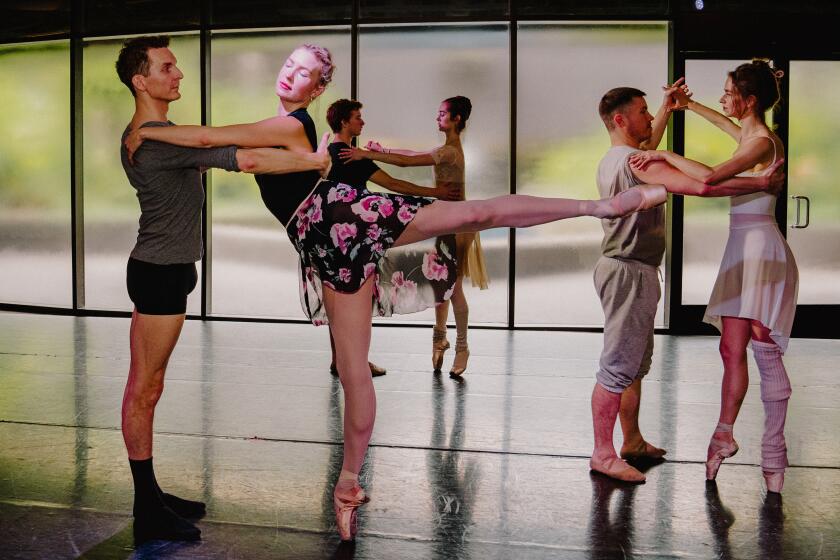
What would the great George Balanchine do? L.A. ballet director thinks he has the answers

Santa Monica sci-fi museum controversy: A child porn conviction, delays and angry ‘Star Trek’ fans
- Media & Industry
- Meetings & Events
- Select Language 简体中文 繁體中文(香港) 繁體中文(臺灣) India (English) Bahasa Indonesia 한국어 ภาษาไทย Tiếng Việt Singapore (English) Philippines (English) Malaysia (English) Australia/New Zealand (English) Français Deutsch Italiano Español United Kingdom (English) Nordic countries(English) Canada (English) Canada (Français) United States (English) Mexico (español) Português العربية Japan(日本語) Global (English)
- India (English)
- Bahasa Indonesia
- Singapore (English)
- Philippines (English)
- Malaysia (English)
- Australia/New Zealand (English)
- United Kingdom (English)
- Nordic countries(English)
- Canada (English)
- Canada (Français)
- United States (English)
- Mexico (español)
- Global (English)
- Fujiyoshida
- Shimonoseki
- Ishigaki Island
- Miyako Island
- Kerama Island
- Tokyo Island
- Koka & Shigaraki
- Hida Takayama
- Ginza, Nihonbashi
- Beppu & Yufuin (Onsen)
- Ginzan Onsen
- Nagasaki Islands

- Kumano Kodo
- Shikoku Karst
- Amami Oshima
- Hachimantai
- Omihachiman
- Aizuwakamatsu

- Diving in Japan
- Skiing in Japan
- Seasonal Flowers in Japan
- Sustainable Outdoors
- Off the Beaten Track in Japan
- Scenic Spots
- World Heritage
- Home Stays & Farm Stays

- Japanese Gardens
- Japanese Crafts
- Temple Stays
- Heritage Stays
- Festivals and Events
- Theater in Japan
- Japanese Tea Ceremony
- Cultural Experiences in Japan
- Culture in Japan

- Local Cuisine Eastern Japan
- Local Cuisine Western Japan
- Local Street Food
- Japan's Local Ekiben
- Japanese Whisky
- Vegetarian and Vegan Guide
- Sushi in Japan Guide
- Japanese Sake Breweries

- Art Museums
- Architecture
- Performing Arts
- Art Festivals
- Japanese Anime and Comics
- Japanese Ceramics
- Local Crafts

- Scenic Night Views
- Natural Wonders
- Theme Parks
- Samurai & Ninja
- Iconic Architecture

- Wellness Travel in Japan
- Japanese Ryokan Guide
- A Guide to Stargazing in Japan
- Relaxation in Japan
- Forest Bathing (Shinrin-yoku)

- Experiences in Japan
- Enjoy my Japan
- National Parks
- Japan's Local Treasures
- Japan Heritage
- Snow Like No Other
- Wonder Around Japan

- Visa Information
- Getting to Japan
- Airport Access
- COVID-19: Practical Information for Traveling to Japan
- Anime Tourism
- Countryside Stays
- Accessible Tourism
- Hokkaido Great Outdoors
- Scenic World Heritage in Tohoku
- Shikoku’s Nature and Traditions
- Southern Kyushu by Rail

- Traveling by Rail
- How to Travel by Train and Bus
- JR Rail Passes
- Scenic Railways
- Renting a Car
- Sustainable Travel in Japan
- Travel Brochures
- Useful Apps
- Online Reservation Sites
- Eco-friendly Accommodation
- Luxury Accommodations
- Traveling With a Disability
- Hands-free Travel
- How to Book a Certified Tour Guide
- Volunteer Guides
- Tourist Information Center

- Japanese Manners
- Spring in Japan
- Summer in Japan
- Autumn in Japan
- Winter in Japan
- Cherry Blossom Forecast
- Autumn Leaves Forecast

- Japan Visitor Hotline
- Travel Insurance in Japan
- Japan Safe Travel Information
- Accessibility in Japan
- Vegetarian Guide
- Muslim Travelers
- Safety Tips

- JAPAN Monthly Web Magazine
- Arts & Cultures
- Nature & Outdoor
- Festivals & Events
- Insider Blog
- Things to do
- Local Guides
- Food & drink
- Traditional
- Hokuriku Shinetsu

My Favorites
${v.desc | trunc(25)}
Planning a Trip to Japan?
Share your travel photos with us by hashtagging your images with #visitjapanjp

Ogi-shi, Saga-ken
- View on Google Maps
- Get Transit Info
Secluded rural charm just 20 minutes from Saga
- Visit Kiyomizu Falls, the waterfall overlooking Kiyomizu Kenryuji Hochiin Temple
- Climb the 153 steps up to Suga-jinja Shrine
- Admire the cherry blossoms at Ogi Park
How to Get There
Located under 20 minutes by train to Saga Station on the JR Karatsu Line, accessing Ogi by public transport is relatively easy.
From Hakata Station, Fukuoka's main station located close to Fukouka Airport, take the JR Kamome to Saga Station then switch to the JR Karatsu Line. The trip from Hakata to Ogi takes around one hour.
Culinary curiosities
Ogi is famous for its sweets known as yokan, which are delicious jelly deserts made from red bean paste and sugar.
The town is home to a number of koi carp restaurants, so connoisseurs of sushi will be pleased to know that here you can try out some super rare sashimi. You can also try the famously succulent Saga beef here.
Sip the local sake
If you happen to stop in one of Ogi's sake shops, you'll notice Tenzan and Takasago sake, which are made with the pure natural waters of sacred Mt. Tenzan.
Beautiful scenery throughout the seasons
Just a short walk from Ogi Station is Ogi Park. This idyllic setting is perfect for picnics or peaceful walks. It's especially stunning during autumn and spring. The park's approximately 3,000 cherry trees bloom simultaneously in springtime.
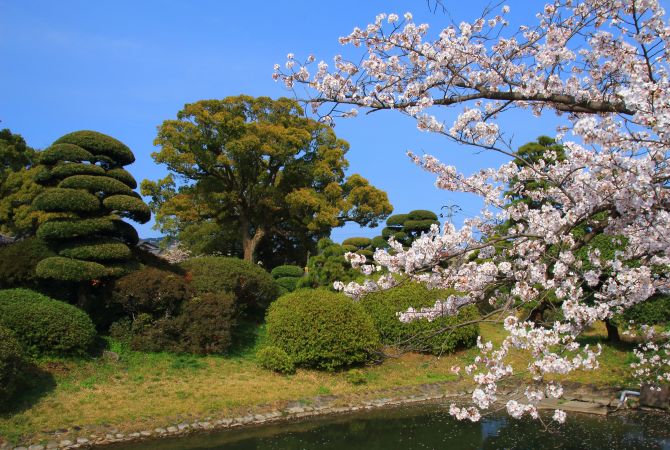
Mt. Tenzan is a favorite among locals for hiking.
Hike up to Suga-jinja Shrine
Suga-jinja Shrine is a must to visit while in Ogi. What makes this shrine so distinctive is the 153 steps that ascend a long staircase all the way to the main hall. There is no elevator, so it requires some physical endurance. Once at the top, you'll notice a small pathway that leads to an observatory which affords some breathtaking views. In spring, the area around the observatory brims with beautiful cherry blossoms.
The sacred and the serene
* The information on this page may be subject to change due to COVID-19.
Recommended for You
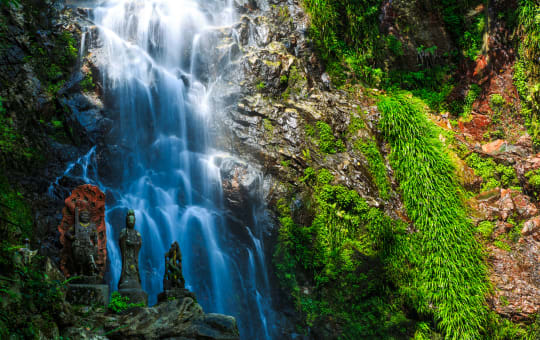
Please Choose Your Language
Browse the JNTO site in one of multiple languages

IMAGES
COMMENTS
A 10-minute walk from the Saga Castle History Museum will take you to the Saga City Observation Deck which is free, and open until 10 p.m. The deck is located on the top floor of the Saga Prefectural Government Office with an outdoor elevator off to the side of the building for public use.
Capital. Saga. Population. 849,788. Area. 2440.64 km². Discover the top things to do in Saga, famous for ceramics, like Yutoku Inari Shrine, reconstructed village Yoshinogari site, Karatsu Castle, beautiful garden Mifuneyama Rakuen, Saga Prefectual Science and Space Museum and Kyushu Ceramic Museum.
Yamanaka Campground in Mitsuse. Tristan Scholze. Yamanaka Campground in the village of Mitsuse, Saga, lies at the base of the hikable Mt. Kana and near some excellent cafes. 4. Accommodation.
728-1 Oura, Hizenmachi, Karatsu City, Saga Prefecture 847-1506. 6. Arita Porcelain Park, Arita - A Palace with Japanese Porcelain. Picture courtesy of Saga Prefectural Tourism Federation. Arita Porcelain Park is a facility where you can look at, purchase, and make Arita ware, a traditional Saga handicraft.
Introducing Saga. Saga Prefecture, located in the southern Japanese region of Kyushu, can be easily visited from major cities by train or Shinkansen. There are many tourist attractions for everyone to enjoy, including those who want to enjoy history, culture, and nature. It has abundant nature, including Ramsar Convention wetlands (Higashi Yoka ...
Saga Prefecture. Intro. Attractions. Saga Prefecture (佐賀県, Saga-ken) is a small prefecture on the island of Kyushu. The prefectural capital is Saga City. The prefecture's best known tourist attraction is its pottery, especially the pottery from the town of Arita.
Opened to the public in 2016, this is the very first of its kind in Japan featuring flight simulators and exhibits narrating the history of ballooning in Saga. Entrance fee: 500 yen. Hours open: 10am-5pm. Closed: Mondays and New Year holidays. Address: 2-27 2chome, Matsubara, Saga City.
How to get here: Walk 17 minutes from JR Saga Station, or take the Showa, Saga City, or Yutoku bus from Saga Station Bus Center to Kencho-mae bus stop (5 minutes). More info: Saga Balloon Museum. 8. Go Treasure Hunting at Kouraku Kiln. Kouraku Kiln in Arita offers an exceptional full-on pottery experience.
Saga City is considered a jokamachi, or castle town, as much of its history revolved around Saga Castle and the individuals who ruled from within. To this day, there's a historic presence there, as well as within the surrounding area. There are remnants of a very different Japan that existed not that far back as the abolishment of the feudal domain system didnt occur until 1871.
Address 947 Chinzeimachi Hado, Karatsu, Saga 847-0404. 6. Kiyomizu Falls. Photo courtesy of Saga Prefecture Tourism Federation. With a sheer drop of 75 meters, Kiyomizu Falls is a beautiful sight to behold, and the hike through the forest reveals fantastic scenery. Photo courtesy of Saga Prefecture Tourism Federation.
Top Attractions in Saga. See all. These rankings are informed by traveler reviews—we consider the quality, quantity, recency, consistency of reviews, and the number of page views over time. 1. Saga Castle Hommaru History Museum. 243. Architectural Buildings.
The city is home to a variety of cultural and historical attractions that are worth exploring. While not a huge city, a stroll though downtown saga is worthwhile. Here are some of the top things to do in Saga City. Saga Castle. Saga Castle is a historic castle that was built in 1591. It's the largest wooden castle in Japan.
2. Visit Saga Castle Source: TETSU Snowdrop / shutterstock Saga Castle. Saga City is of course, like almost all cities in Japan, the home of a castle. In this case it is called Saga Castle which you can visit as part of a tour of the city, and which is known for its killer whale gate.
Saga Prefecture is known for the production of sake. To try some of its best brands, head to Kashima City's Sakagura dori (sake breweries street) in southern Saga. Once thriving with merchants' houses, sake breweries and other shops, this area is now dotted with preserved historic buildings. Many of the sake breweries are still here and they ...
This shrine is one of the leading sightseeing spots in Saga Prefecture where 3 million tourists visit each year. This shop sells special products of Ariake Sea and local agricultural products. Tidal land experience of the Ariake Sea is also popular. It is the official tourist website of Kashima City of Saga Prefecture in Japan.
Saga Attractions. Saga Prefecture is a small prefecture but still has much to see and do. Fans of historic Japanese castles can enjoy both Karatsu Castle and Saga Castle, though both are modern reconstructions. Kashima City in the south of Saga Prefecture is home to one of Japan's most famous inari shrines, Yutoku Inari Shrine ...
Welcome ♪ adventure realm of water and green!Saga 21 Century citizens ' forest is a natural park cross-Fuji town, saga city and mitsuse kitayama, Lake region.Cycling road runs on a lake and forest, approximately 6 km Of course you can enjoy.Kitayama Lake, pedal boats and hands rowing boat.
July 23, 2016 - Saga City - Saga Prefecture. When you normally visit the prefectural capital it's normally a hive of commerce and activity. That is - unless you come to Saga where it's more like a small friendly town. For today - I visited some of the main sites of Saga which I'm happy to say in general significantly bet my expectations.
Food in Saga City, Saga. Explore the best of Saga's food - from popular classics like sushi, ramen, Wagyu, tonkatsu, teppanyaki and soba, through to its regional favourites like Kobe beef, Hiroshima okonomiyaki and Okinawan soul food.
Triotech, an award-winning creator of media-based attractions, is celebrating the launch of the eagerly awaited SAGA City of Light experience, which opened yesterday (28 May) in Shanghai, China. This groundbreaking project is Puy du Fou's first entry into the Chinese market and showcases the innovative partnership between Triotech's cutting-edge technology and Puy du Fou's captivating ...
The summer box office continued to be a disaster as Sony's "The Garfield Movie," Paramount's "If" and Warner Bros "Furiosa: A Mad Max Saga"again topped the chart.
Located under 20 minutes by train to Saga Station on the JR Karatsu Line, accessing Ogi by public transport is relatively easy. From Hakata Station, Fukuoka's main station located close to Fukouka Airport, take the JR Kamome to Saga Station then switch to the JR Karatsu Line. The trip from Hakata to Ogi takes around one hour.